Contents
Hatshepsut Temple | Introduction
The Hatshepsut Temple is located in Deir el-Bahari on the west bank of Luxor, Egypt. It is one of Luxor's must-visit attractions. This temple was built during the 18th Dynasty of the New Kingdom, under the orders of Queen Hatshepsut, often referred to as the "Empress Wu Zetian of Ancient Egypt." It served as her mortuary temple and was dedicated to the sun god Amun-Ra. Hatshepsut was the first woman in Egyptian history to successfully ascend to the throne as a pharaoh, and her reign marked one of the most stable and prosperous periods in ancient Egypt.
The architectural style of this temple was groundbreaking at the time. The design skillfully integrates natural landscapes with man-made structures, blending seamlessly with the majestic cliffs of the Deir el-Bahari mountain range. Its terraced and symmetrical design gives the impression that the temple emerges naturally from the mountainside.
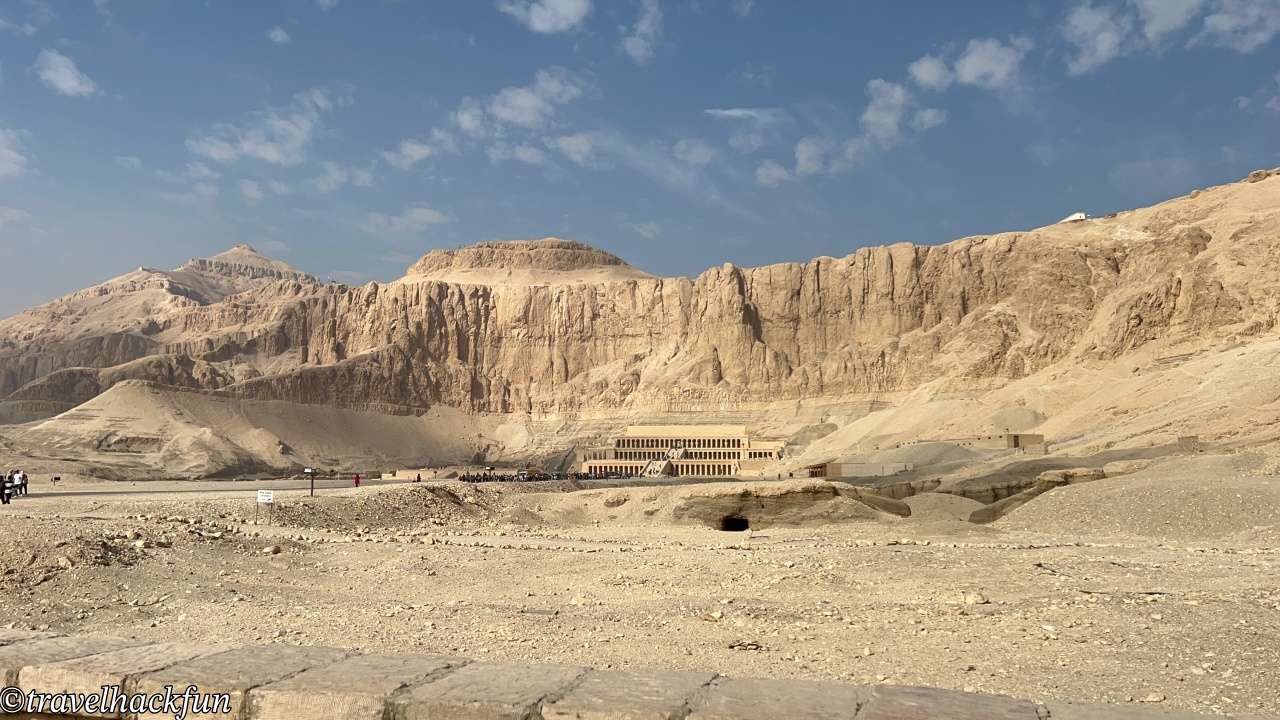
🧳 A full travel resource kit for this topic is currently in the works.
It will include itinerary plans, recommended stays, custom maps, and useful tips.
Hatshepsut Temple | Trip Planning, Transportation, Ticket Information
The Hatshepsut Temple is located on the west bank of Luxor, about a 30-minute drive from Luxor city center. For a more unique experience, you can take a boat ride across the Nile River from the east bank to the west bank, enjoy the river scenery, and then transfer to a vehicle to reach the temple.
A common one-day itinerary on Luxor's west bank typically includes the Valley of the Kings, the Hatshepsut Temple, and the Colossi of Memnon. It's best to start your Luxor tour early in the morning to avoid the midday heat. Visiting the Hatshepsut Temple itself takes about 1.5 to 2 hours.
Luxor does not have Uber, but if you’re traveling by cruise, the Luxor Temple is typically included in group tour packages, which can save you transportation hassles and provide a convenient overnight option. For those traveling independently or seeking more flexibility, private car hire is recommended, as most itineraries in Luxor involve visiting multiple sites in one day. It’s best to arrange a car or transfer service in advance before arriving in Luxor.
Luxor private chartered car with tour guide
Luxor Charters
Nile Cruise from Aswan to Luxor
Tickets for the Hatshepsut Temple can be purchased directly on the Egyptian government's official website (Ticket Link). Foreign visitors should select the "Other Nationality" option when purchasing tickets. Electronic tickets are now available, saving you from waiting in line.
- Hotel search: Agoda
- Activities & tickets: KKday / Klook / TripAdvisor
- Travel credit cards (US only): My card picks + beginner tips
Hatshepsut Temple | Highlights
The most remarkable feature of the Hatshepsut Temple is its architectural design. The temple is built into the mountainside, with its three-tiered terrace design blending seamlessly with the backdrop of the Deir el-Bahari cliffs. Each terrace is connected by long ramps, and every level features unique colonnades and reliefs, showcasing the artistic achievements of ancient Egyptian architecture. Like other pharaohs, Hatshepsut used temple construction to assert her divine authority and legitimacy as ruler. Each terrace features intricate colonnades, carvings, and statues that narrate her achievements, her relationship with the gods, and her famous Punt Expedition.
Although the temple backs onto the cliffs, it shares a key symbolic element with other Egyptian temples: the Nile River imagery. The Nile was not only a natural river but also symbolized the journey to the afterlife in ancient Egyptian belief. The temple’s design, with its ascending three-tiered structure, represents the Nile's flow, rising from the earthly plane to the sacred sanctuary within the cliffs. This symbolizes the soul’s journey from the mundane to the divine, achieving purification and transcendence.
It’s worth noting that the Hatshepsut Temple was originally part of a larger architectural complex, which included at least three temples. Today, only the three-tiered main structure, along with some remnants of the Temple of Mentuhotep II and parts of sphinx statues, remain. Before entering the temple, visitors can stop at the visitor center to view models of the original architectural layout, which helps to imagine the grandeur of the complex.

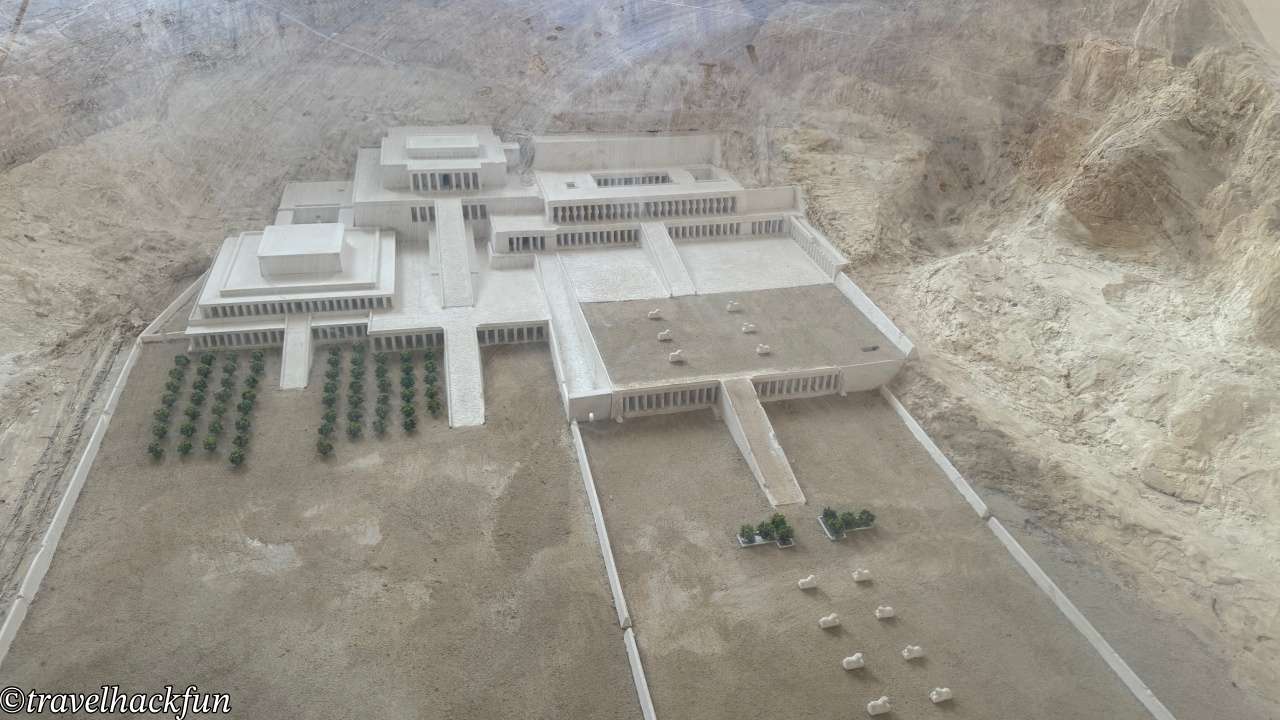
The temple’s designer, Senemut, is also a figure of intrigue. Senemut was a commoner with no noble lineage, which was rare in ancient Egypt. Historians speculate that he may have had a special relationship with Hatshepsut, possibly even as her lover.
Avenue of the Sphinxes and Lower Terrace
Visitors arrive at the temple via a shuttle bus that drops them off at the entrance. Upon disembarking, you’ll see the Avenue of Sphinxes, where rows of sphinx statues once lined the path. Though many of them are now damaged, the grandeur of the site can still be felt.
Before proceeding further, it’s worth learning more about the life of Hatshepsut. She was the first true female pharaoh in Egyptian history. Her father, Thutmose I, had no direct male heir, so his throne passed to Thutmose II, who married his half-sister Hatshepsut to preserve the royal bloodline. Thutmose II ruled for only three years without producing a legitimate heir. After his death, the young Thutmose III ascended to the throne, with Hatshepsut acting as regent. Eventually, Hatshepsut declared herself pharaoh.
To legitimize her rule, Hatshepsut claimed to be the daughter of the god Amun and appeared in public dressed as a male pharaoh, a fact reflected in the temple’s artwork. Statues and reliefs depict her wearing a false beard and traditional male attire. Even the damaged statues show a unique design, combining a lion’s body with the pharaoh’s face and beard.
The lower terrace features a spacious and symmetrical layout, setting a solemn tone before entering the main structure. The colonnades, a hallmark of the temple, originally contained colorful wall paintings. The colonnades on the lower terrace depict scenes such as transporting an obelisk from Aswan to the Karnak Temple via the Nile, though these areas were closed to visitors at the time of our visit.
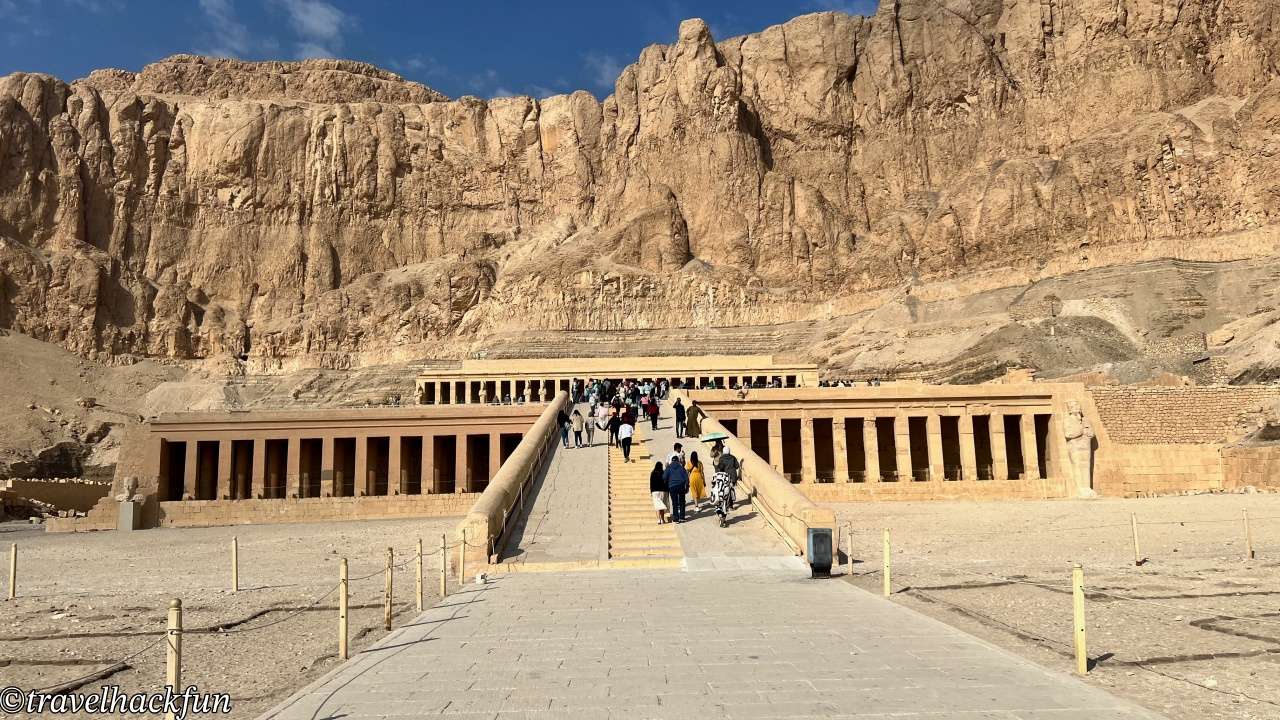
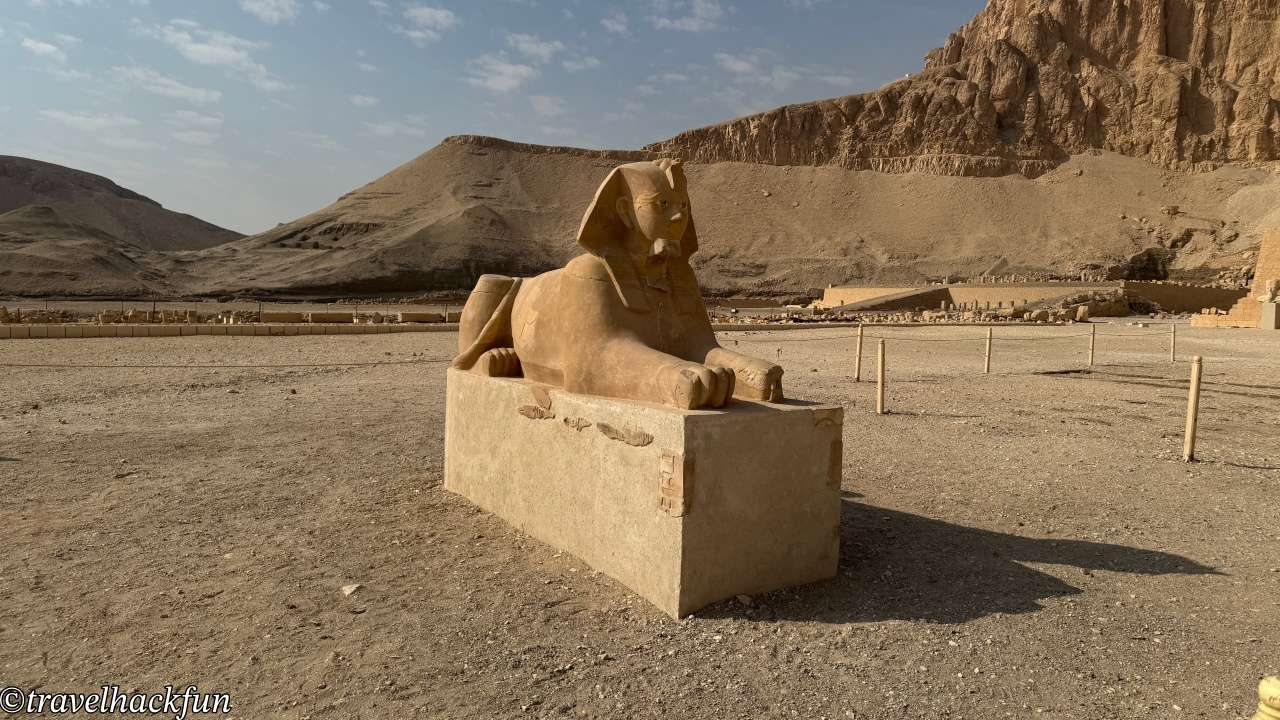
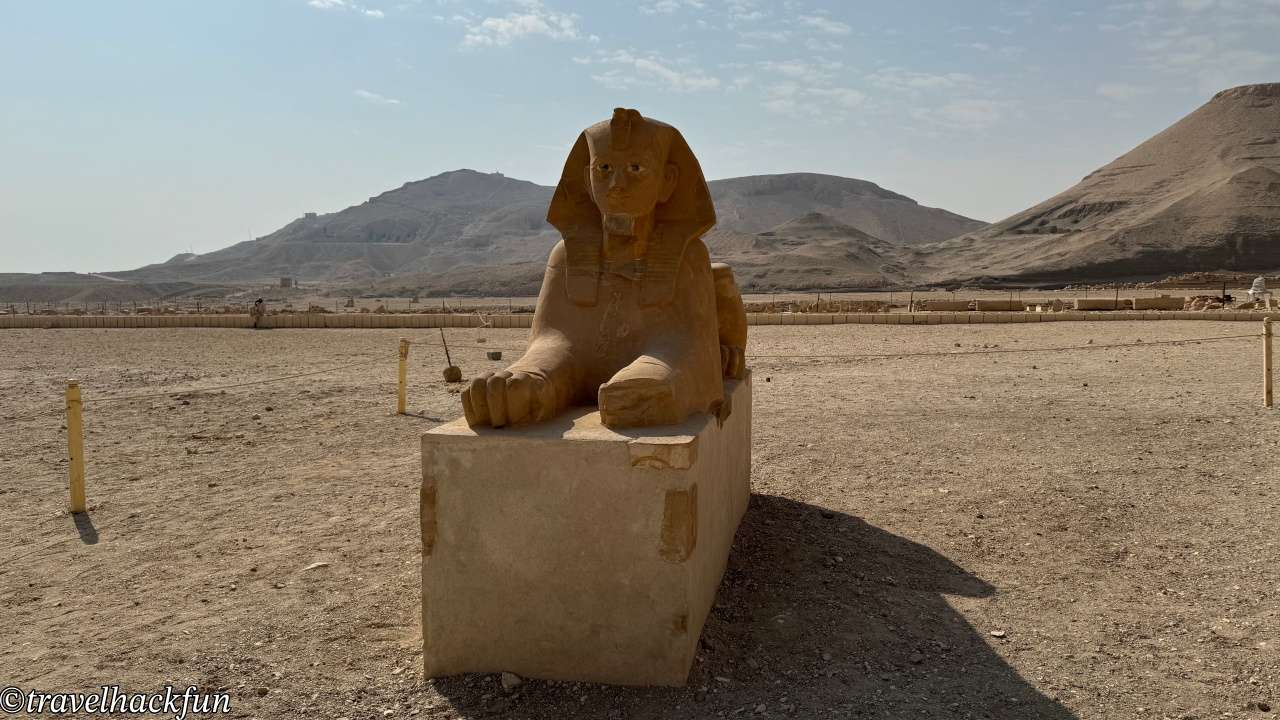
Middle Terrace
Ascending the long ramp to the middle terrace, visitors are greeted by the temple’s most famous relief: the Expedition to Punt. One of Hatshepsut’s greatest achievements was halting Egypt’s military campaigns and expanding trade with neighboring regions, leading to prosperity under her rule. The Punt relief depicts Hatshepsut dispatching a fleet to Punt (likely modern-day Somalia) for trade. The carvings illustrate ships, exotic goods like frankincense trees, and the inhabitants of Punt.
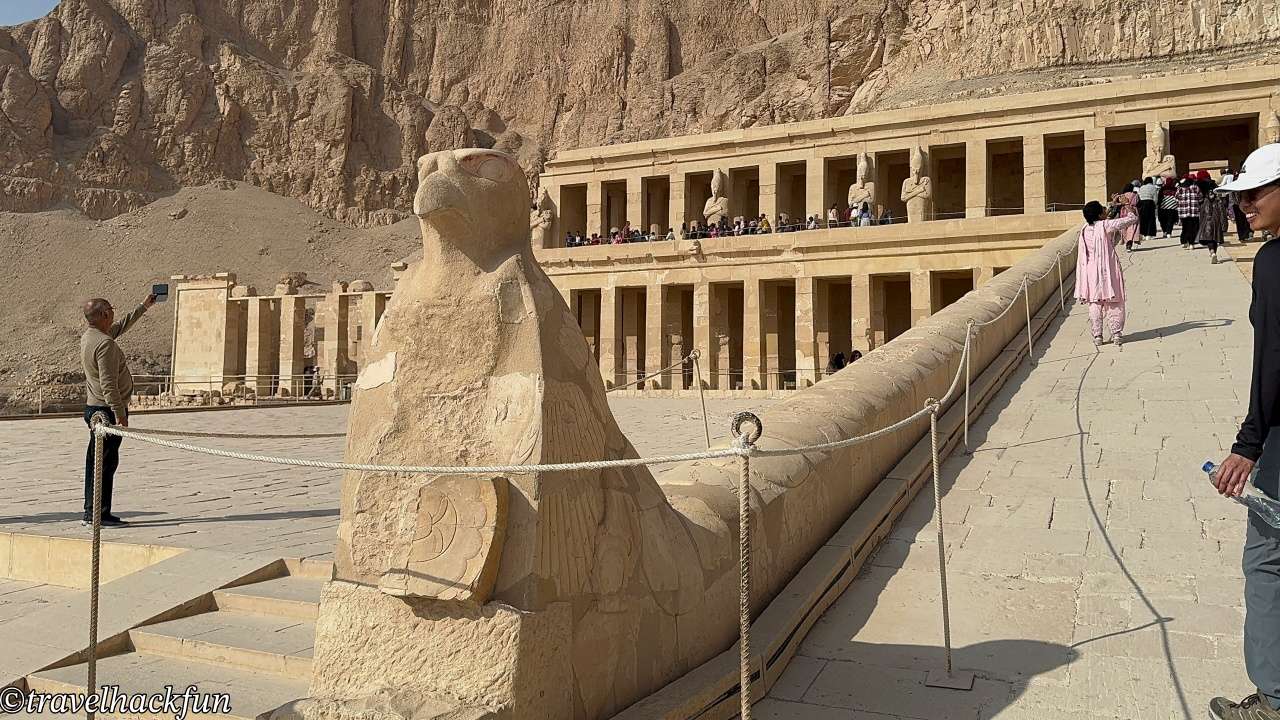
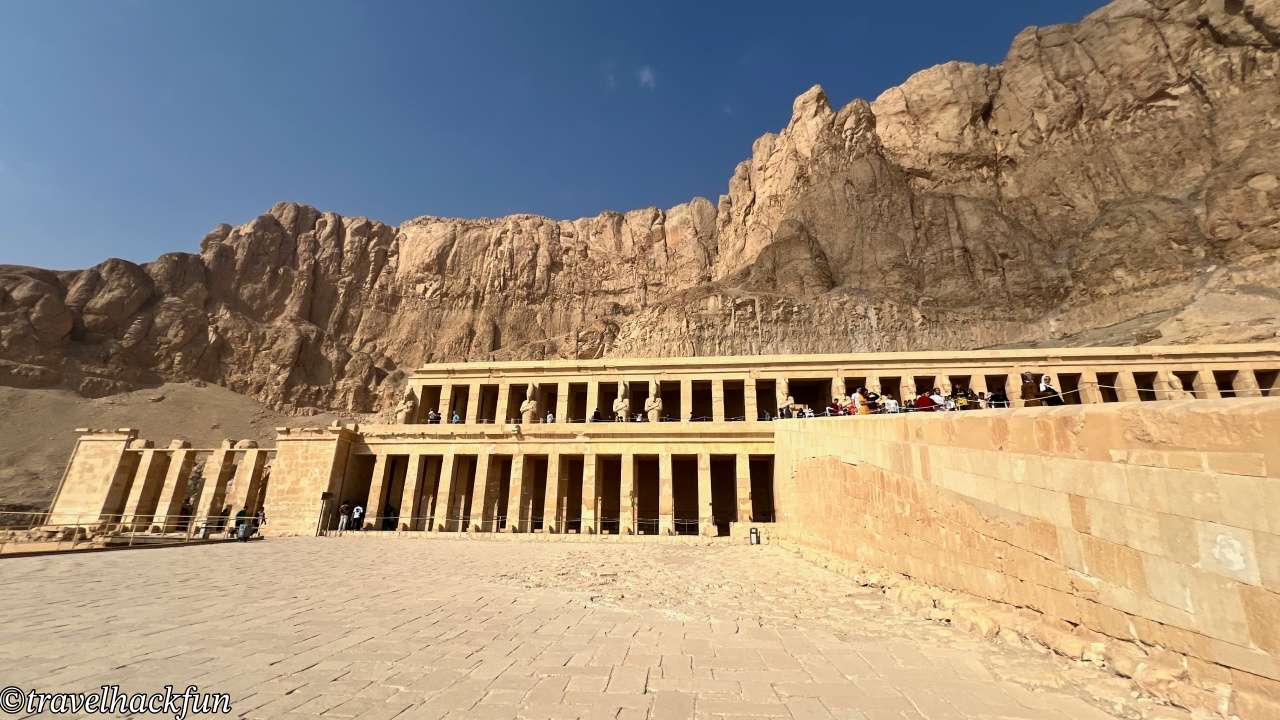
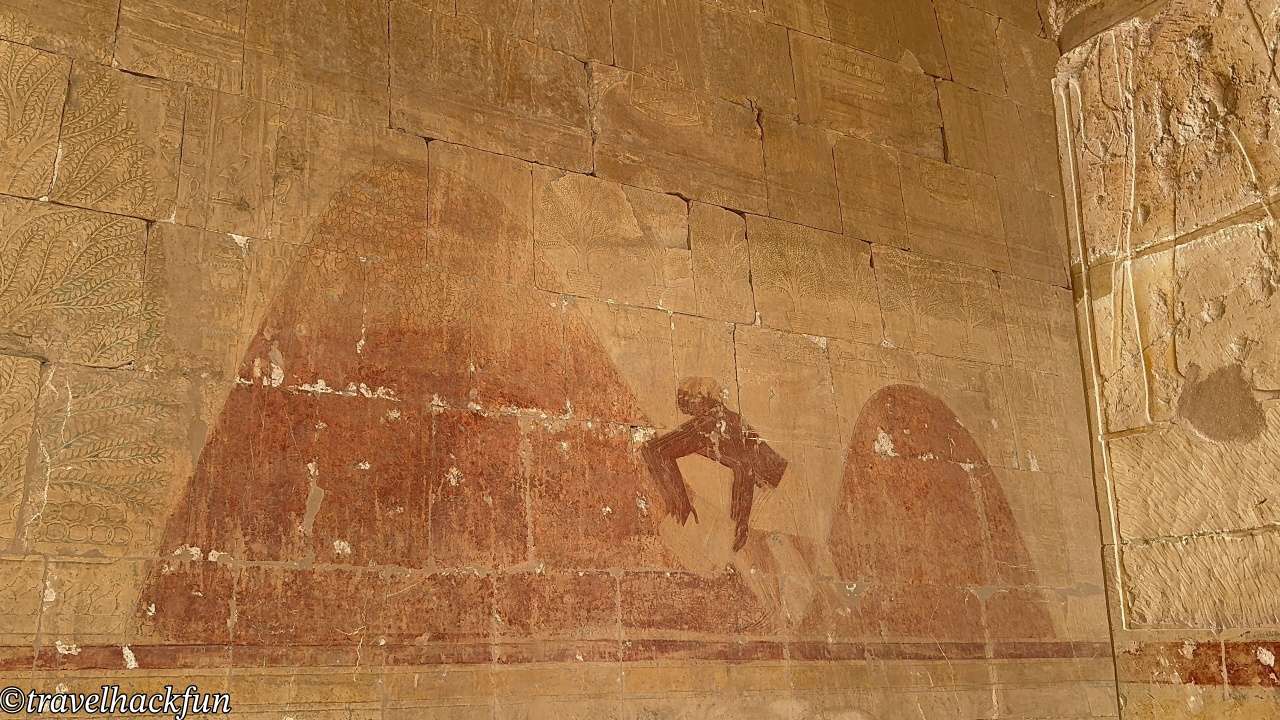
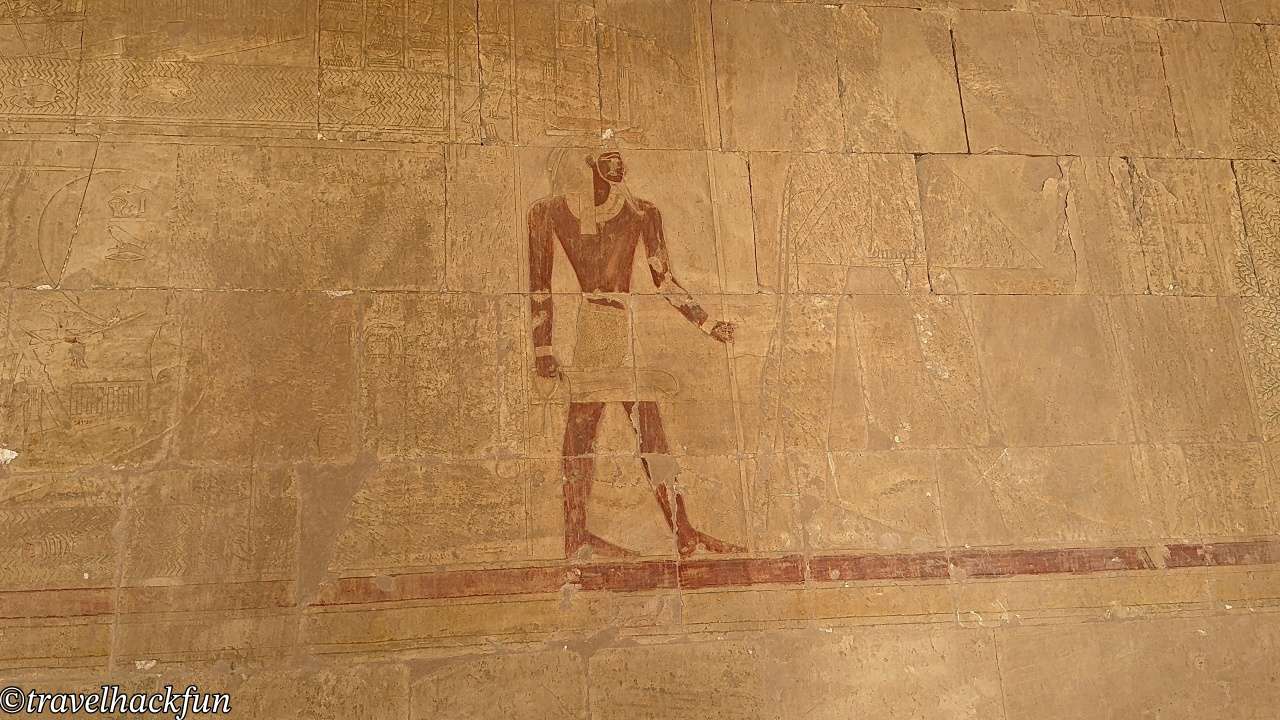
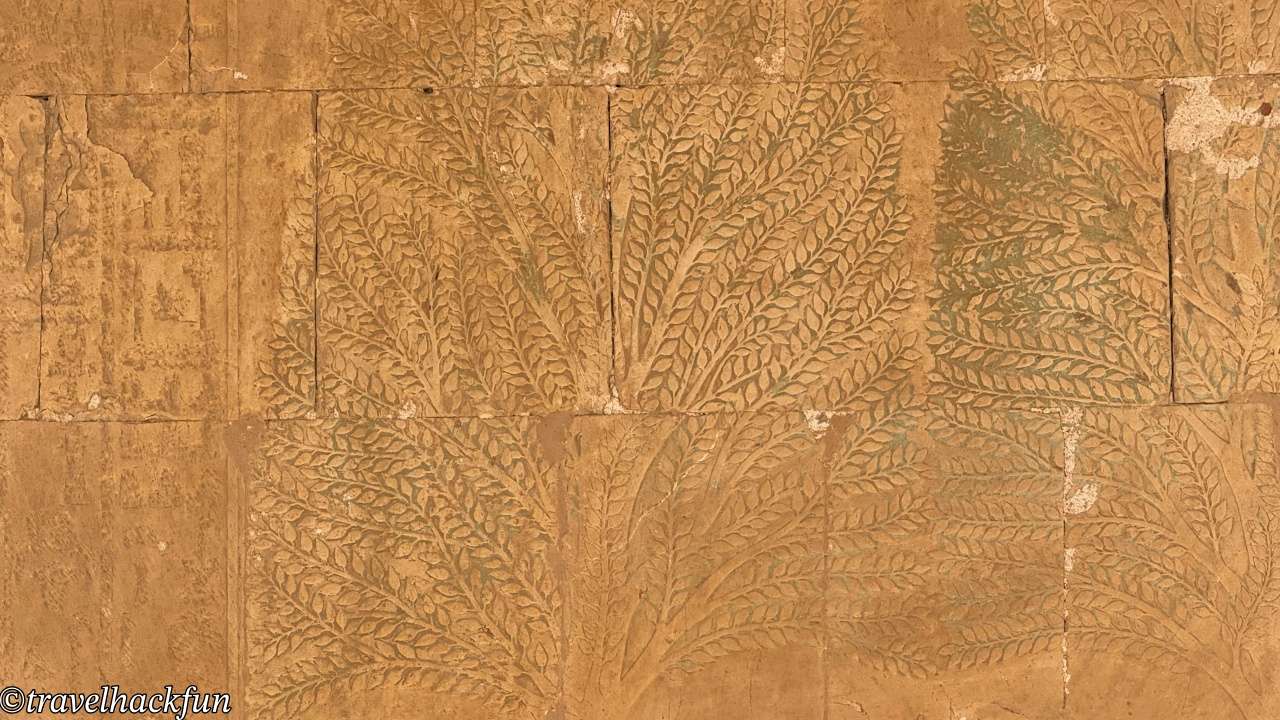
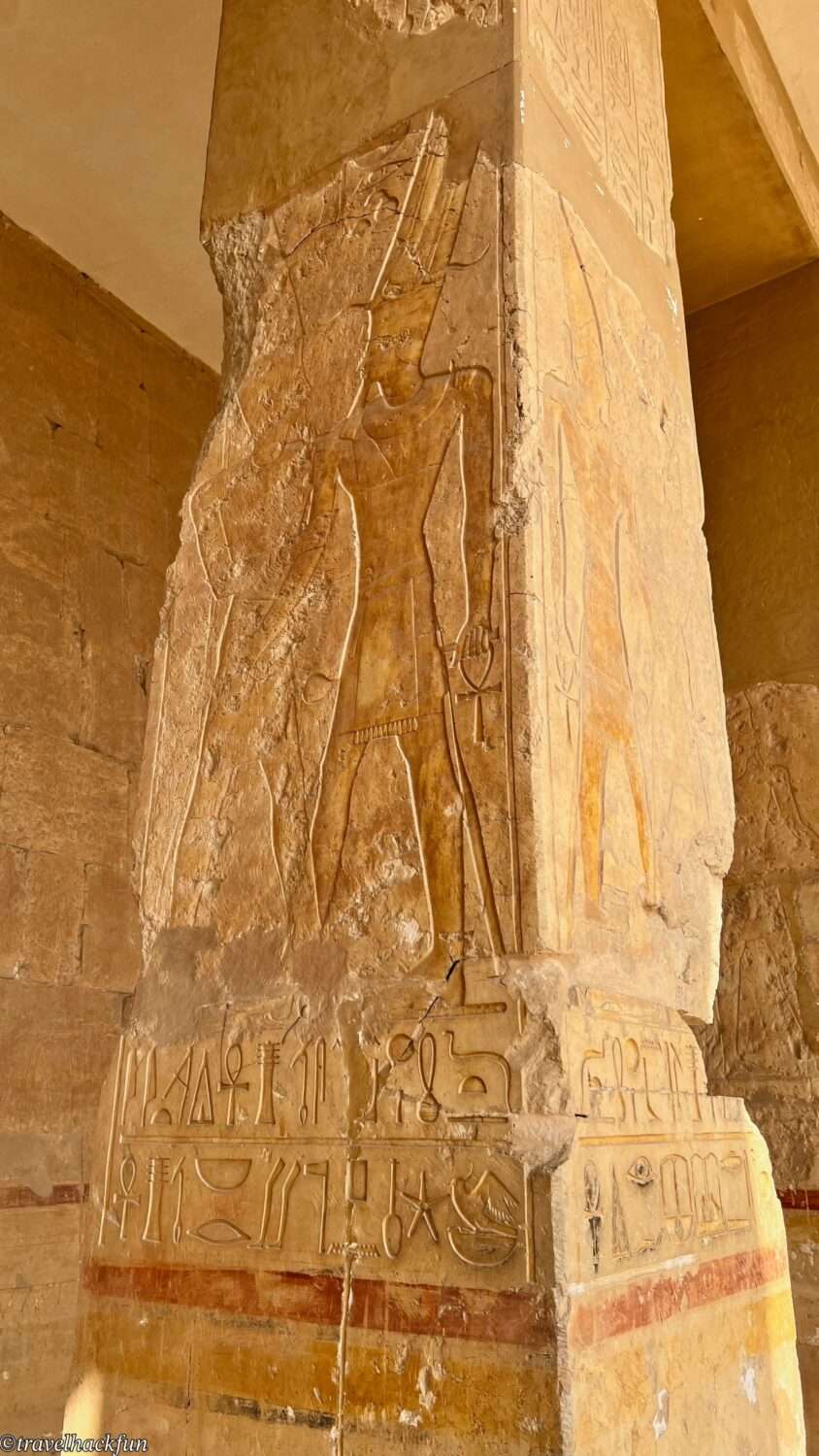
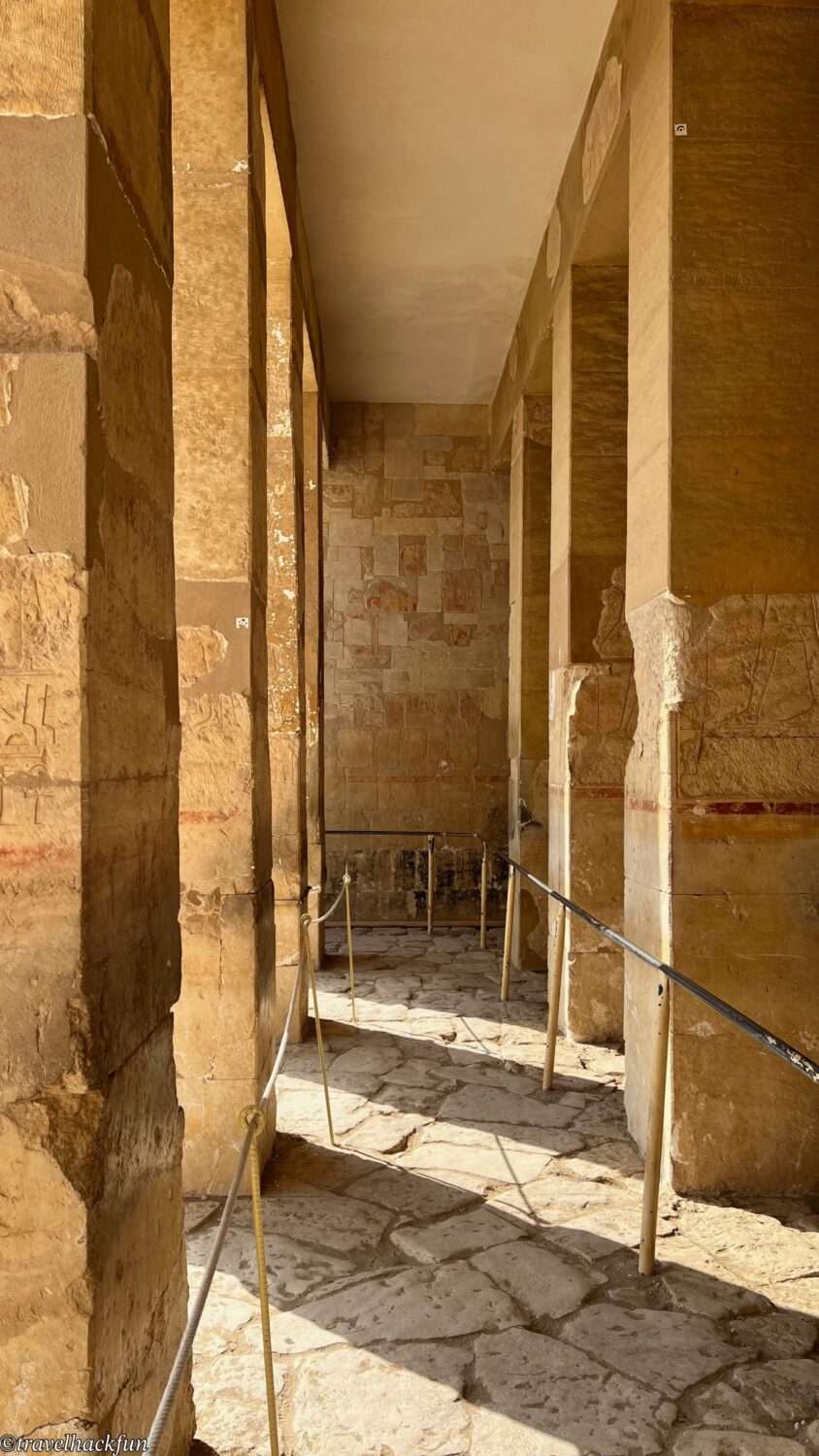
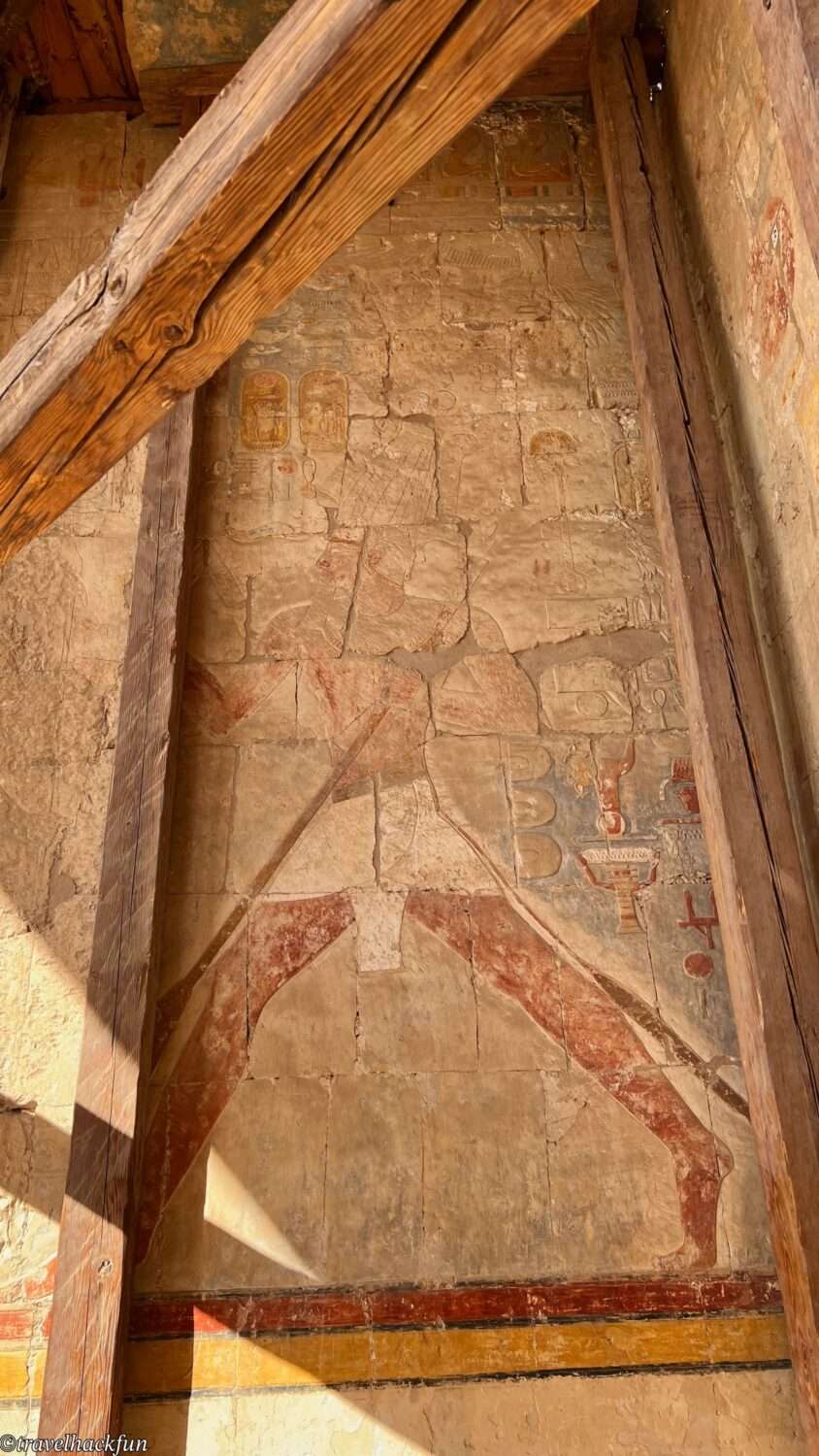
The Hathor Temple on the south side of the terrace is dedicated to the goddess Hathor, often depicted as a cow. Here, you’ll find wall paintings of the pharaoh with Hathor in bovine form, as well as beautiful Hathor-headed columns that are worth close inspection.
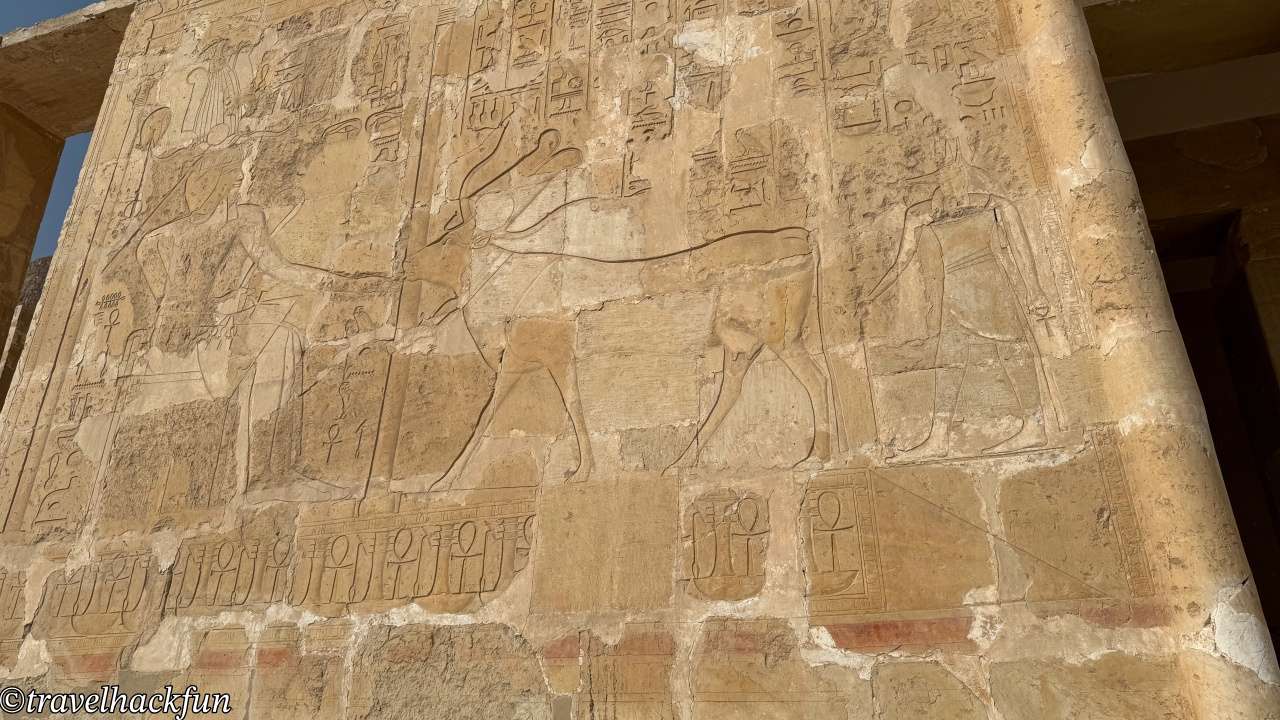
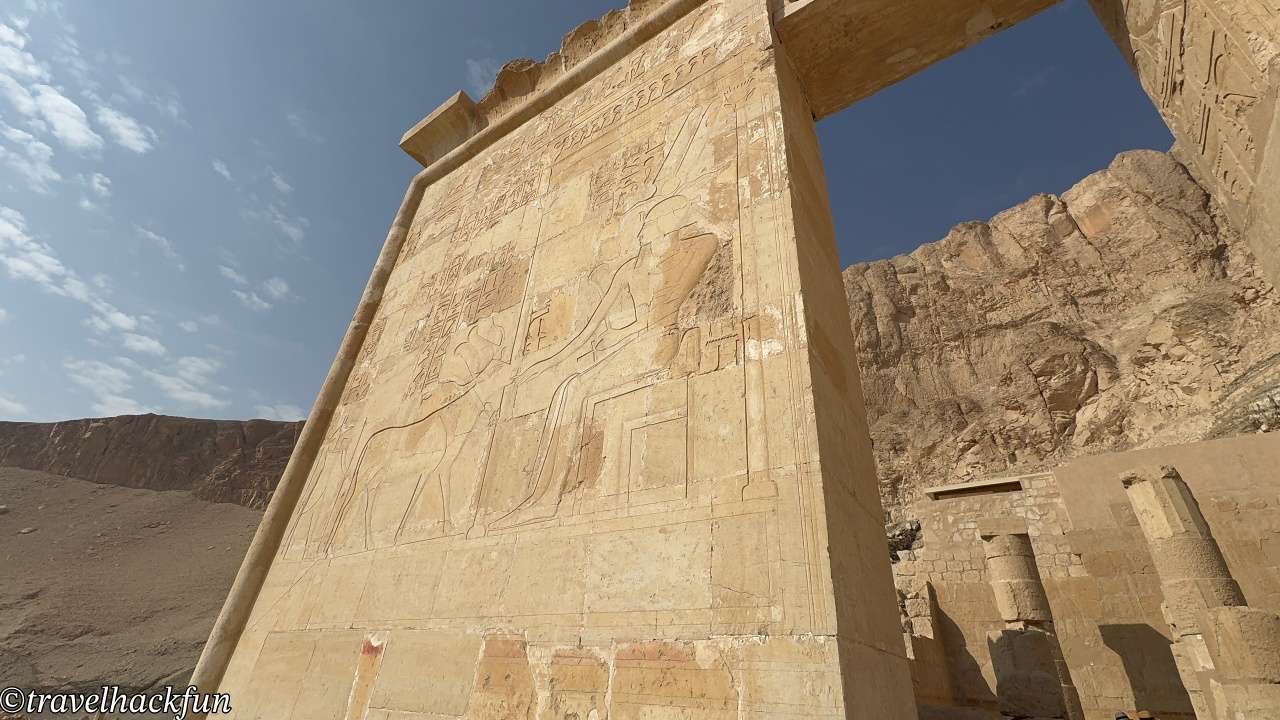
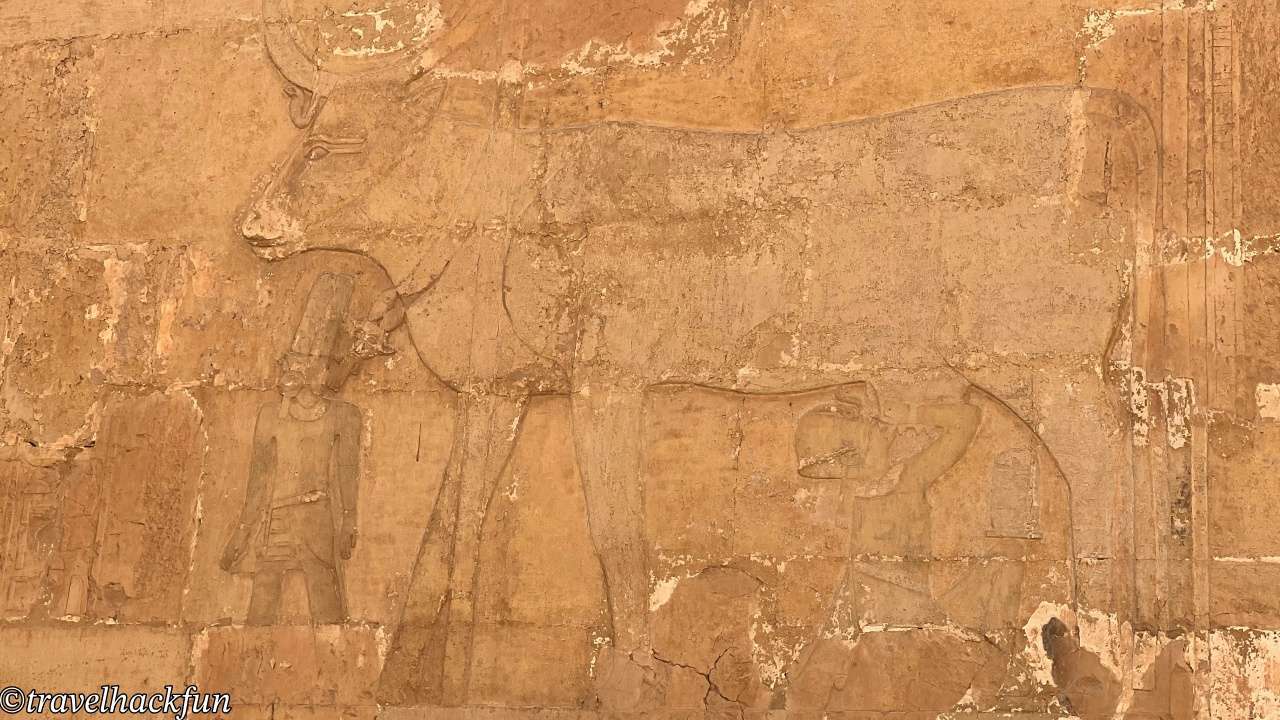
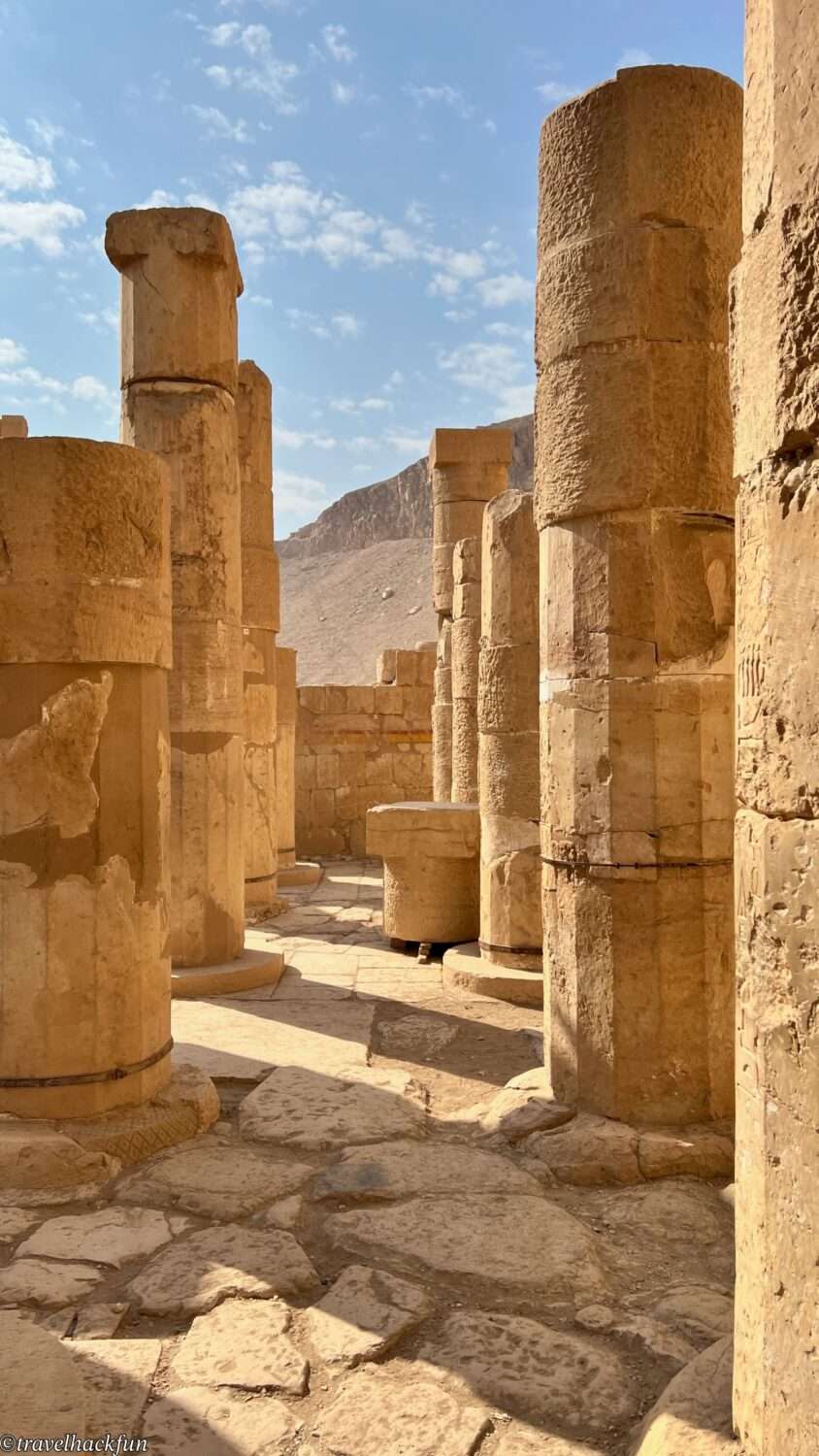
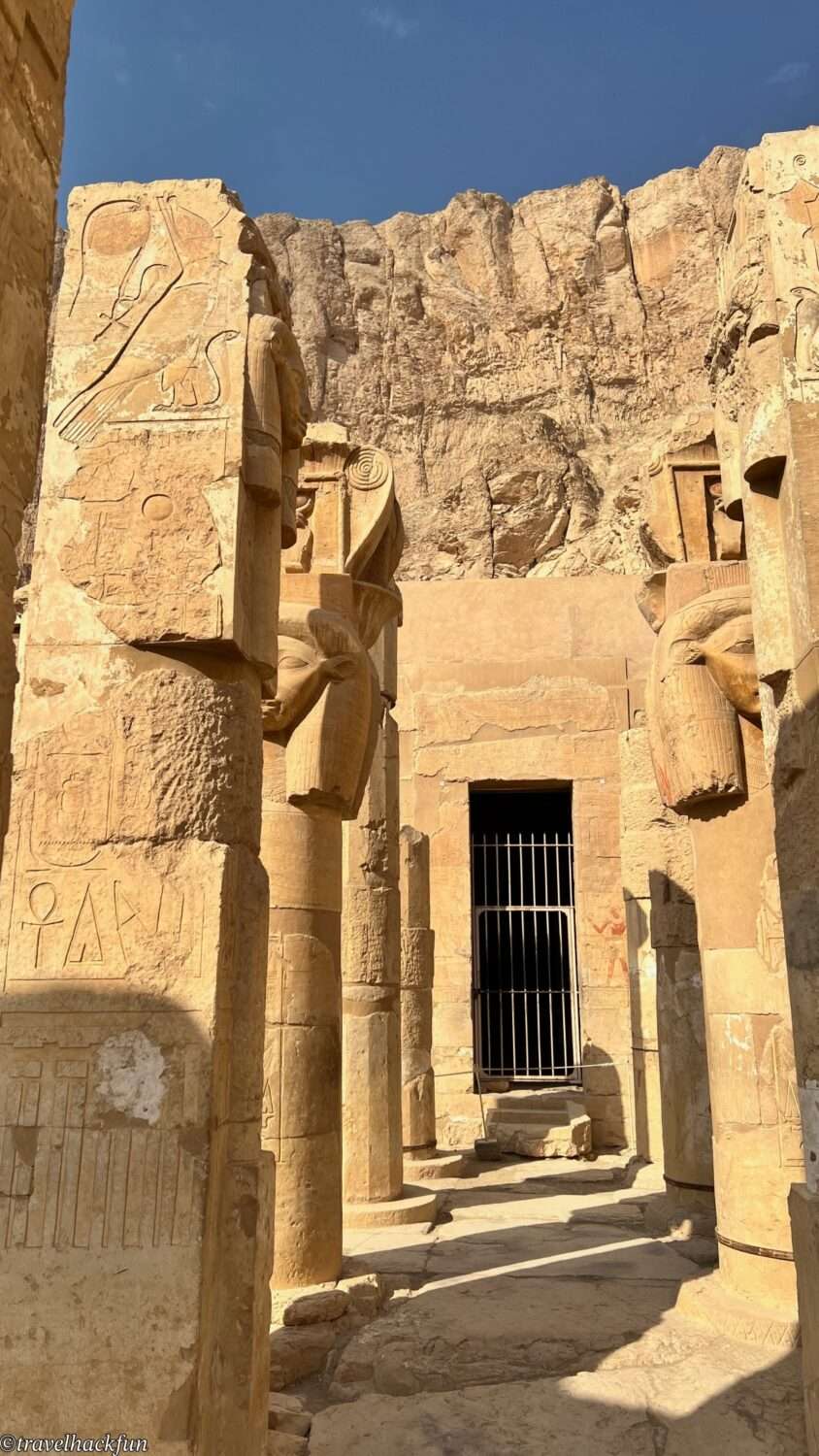
Upper Terrace
The final ramp leads to the upper terrace, the highest point of the temple. Here, you’ll find the Osirian colonnade, where columns feature statues of Hatshepsut in the likeness of Osiris, with crossed arms holding a crook and flail, symbols of eternal rule. Originally, each column was fronted by her statue, though many have since disappeared. This may be linked to the period after her 21-year reign, when Thutmose III reclaimed the throne and attempted to erase her from history. At other sites, such as the Karnak Temple, you can see evidence of Hatshepsut’s statues being defaced. The details of their conflict remain unknown, though some speculate Hatshepsut disappeared mysteriously, while others believe she died of natural causes.
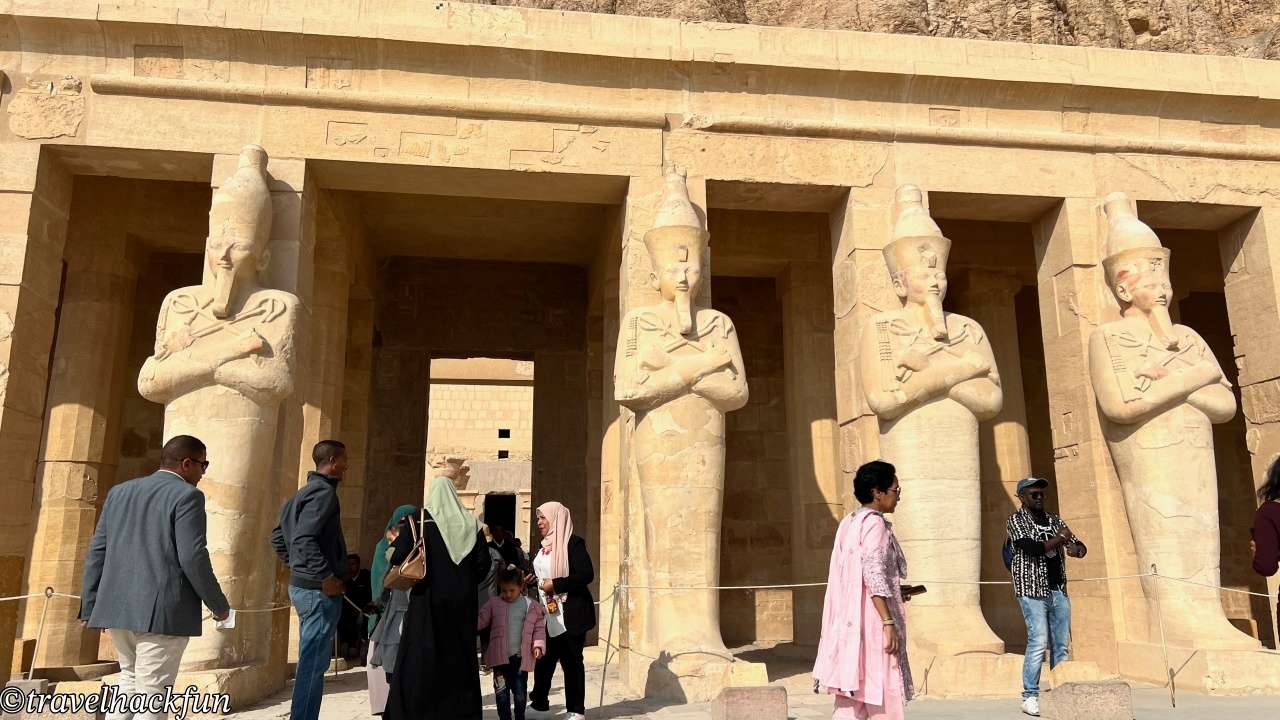
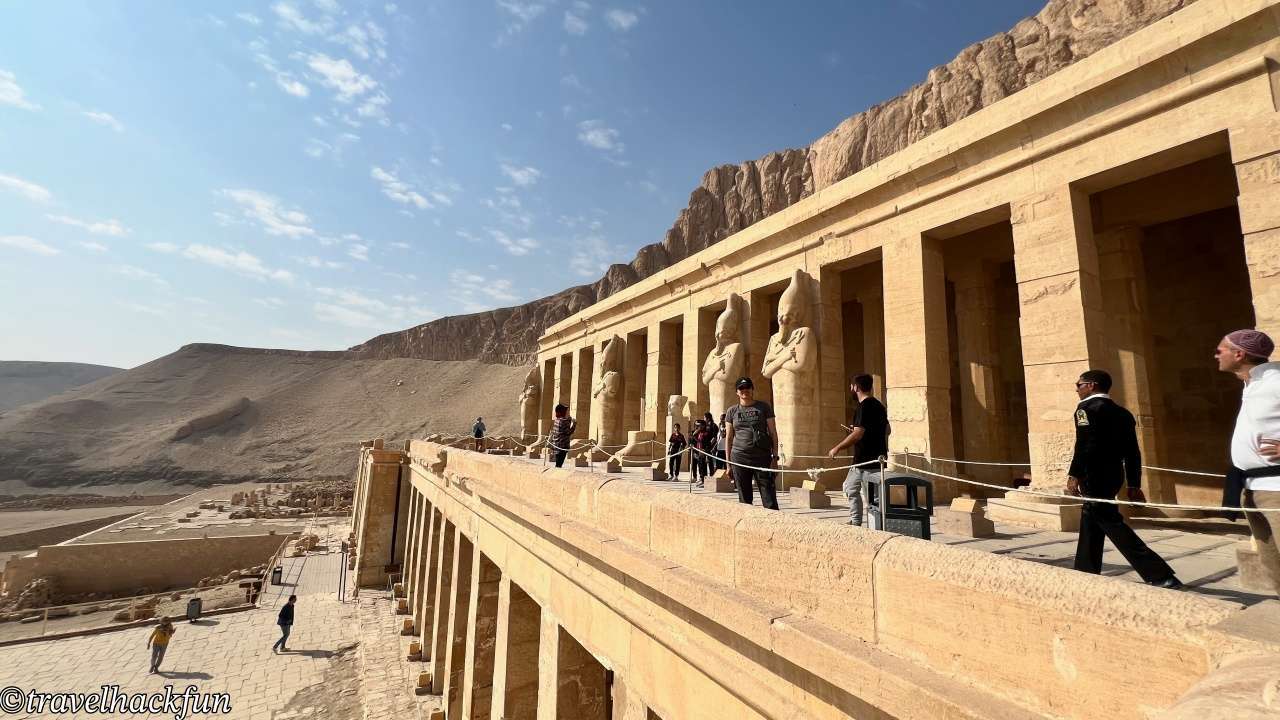
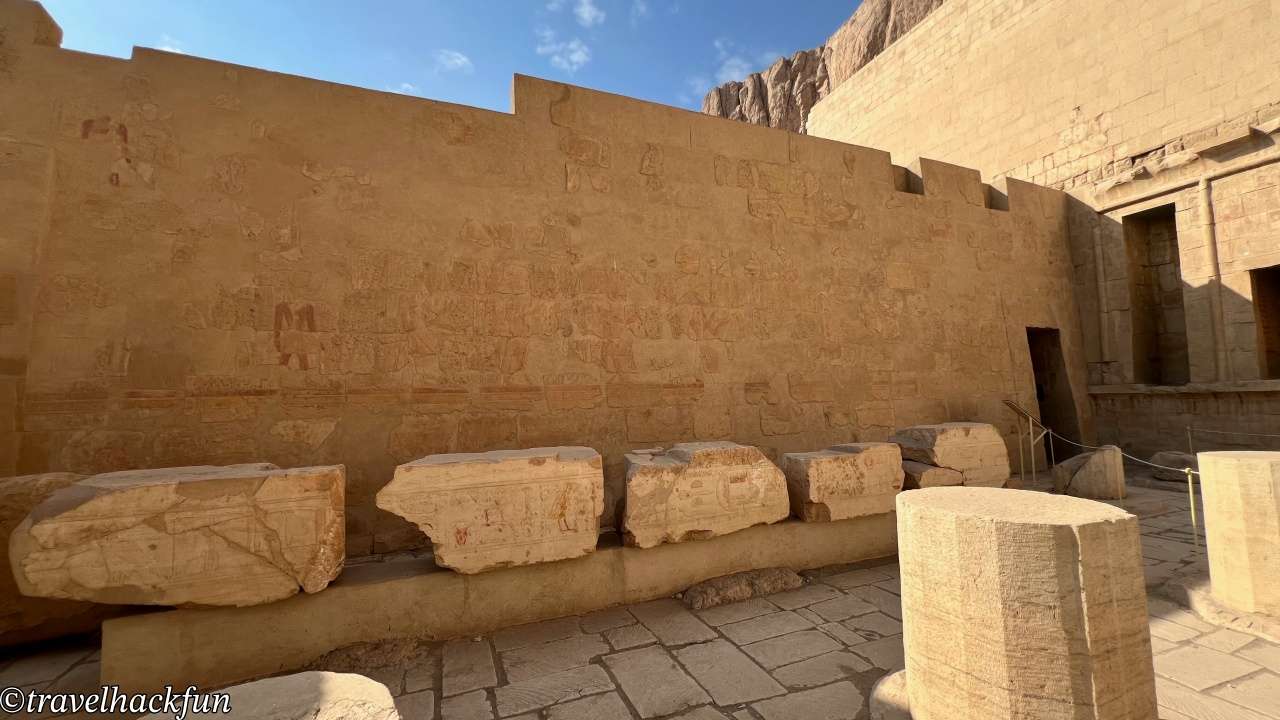
At the heart of the upper terrace is the Amun-Ra Sanctuary, a sacred space carved into the cliff. Amun-Ra, the supreme deity of ancient Egypt, was regarded as the creator of the world. The sanctuary was the most important ceremonial site in the temple. Above the sanctuary’s entrance, you’ll notice two small openings. Ancient sanctuaries were designed with openings to allow sunlight to penetrate, symbolizing the presence of the sun god. On specific days, such as the winter solstice, sunlight would illuminate the statues inside, enhancing the sacredness of the rituals. The walls of the sanctuary are adorned with well-preserved reliefs depicting Hatshepsut’s offerings to the gods.
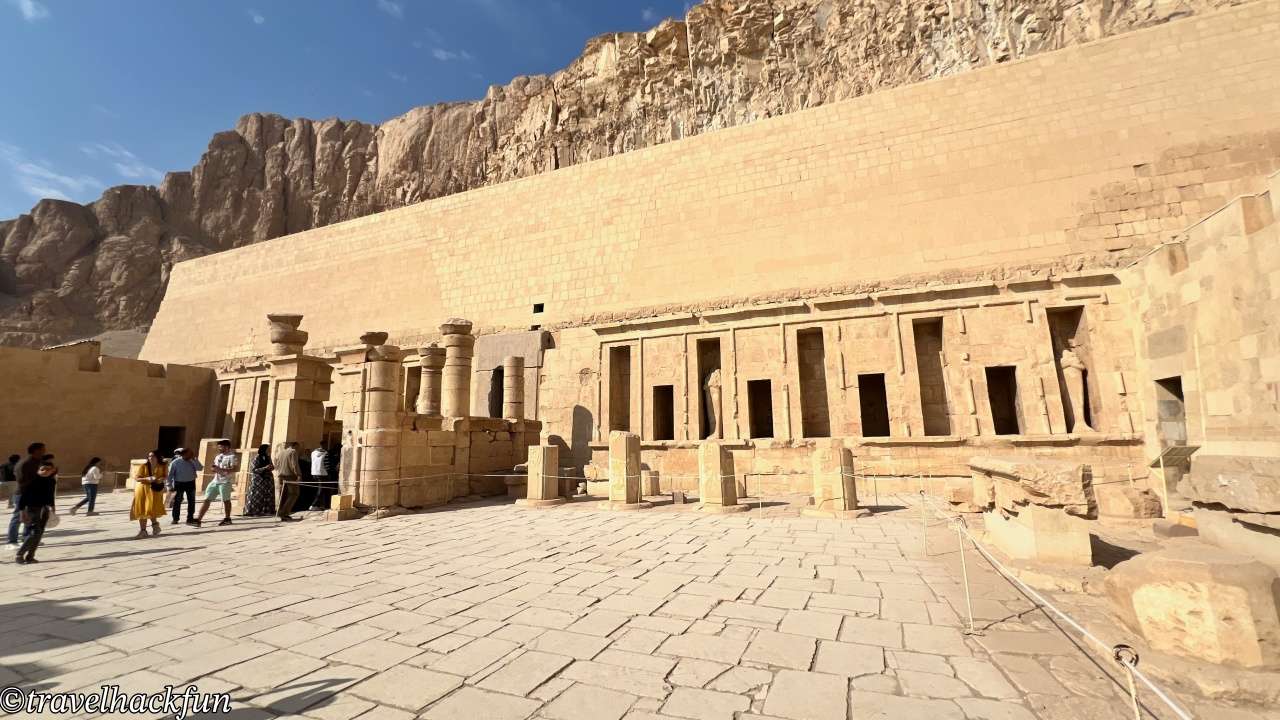
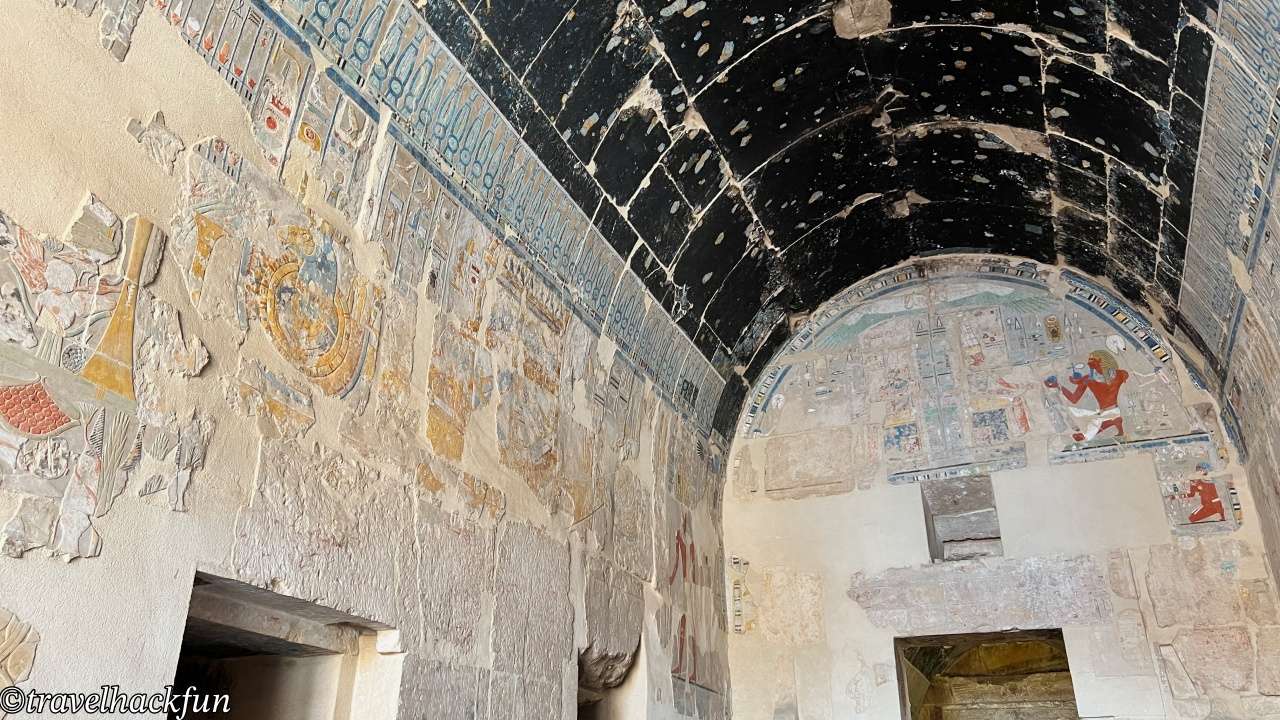
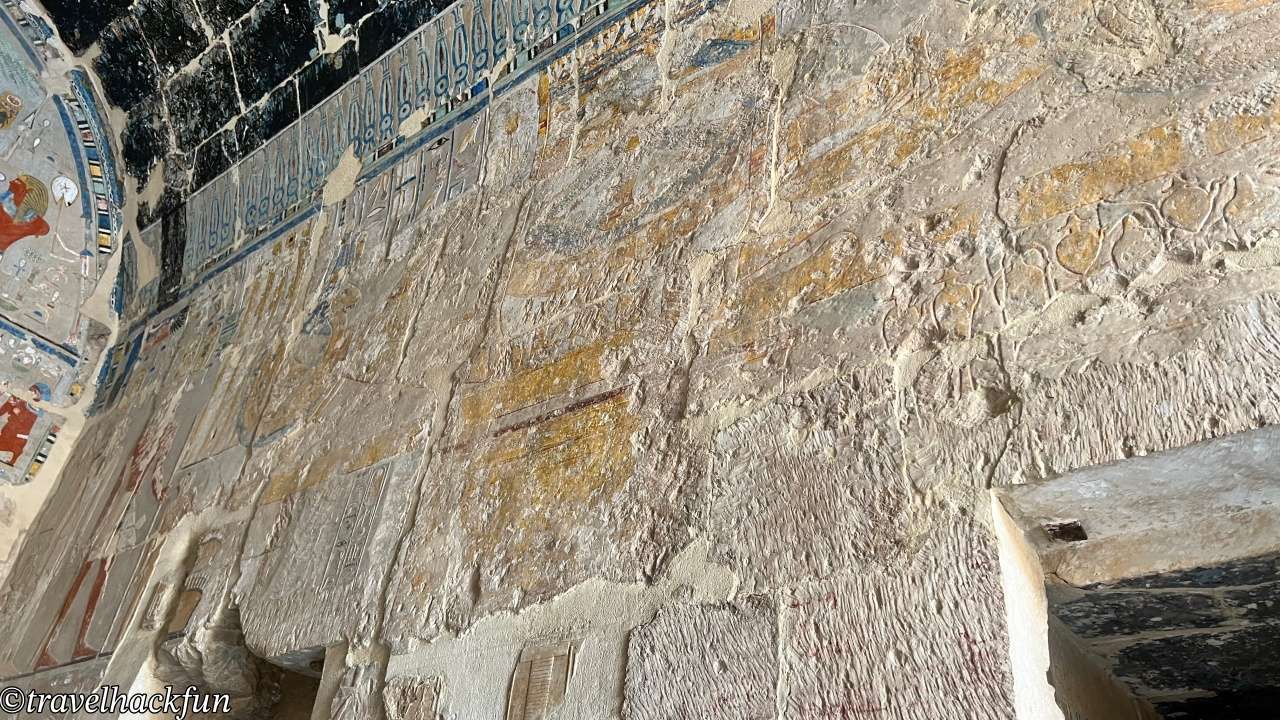
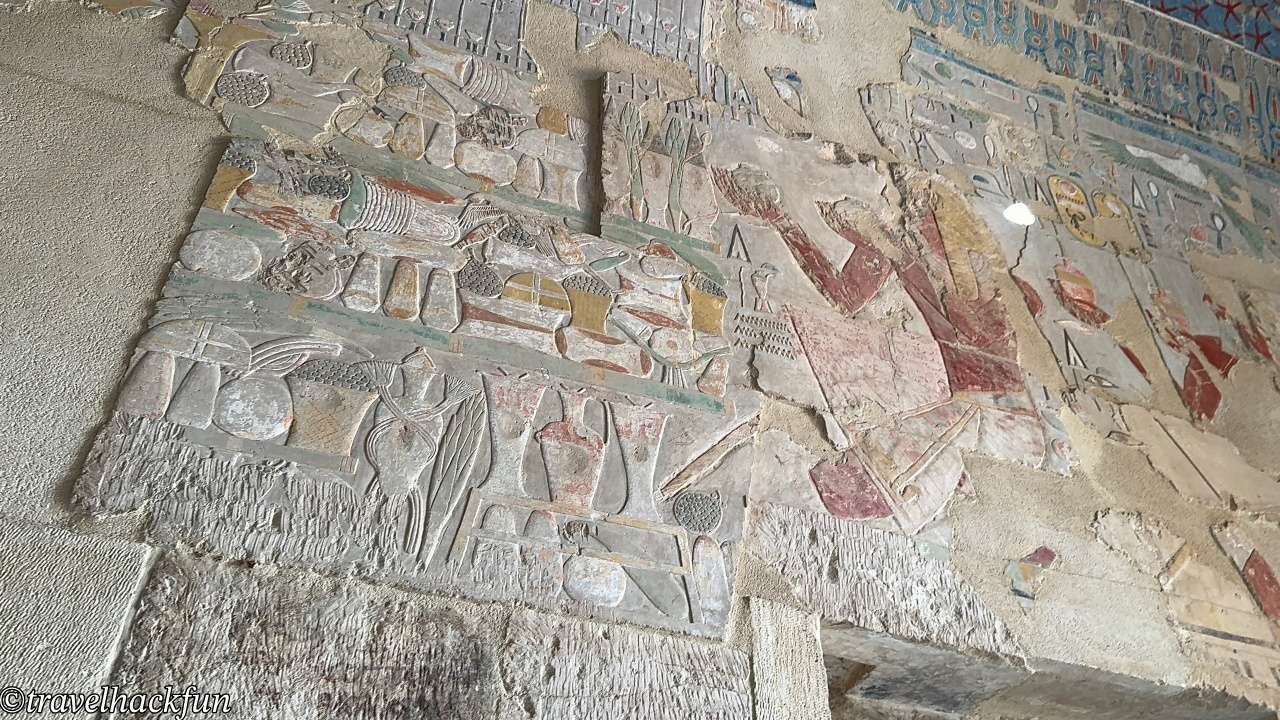
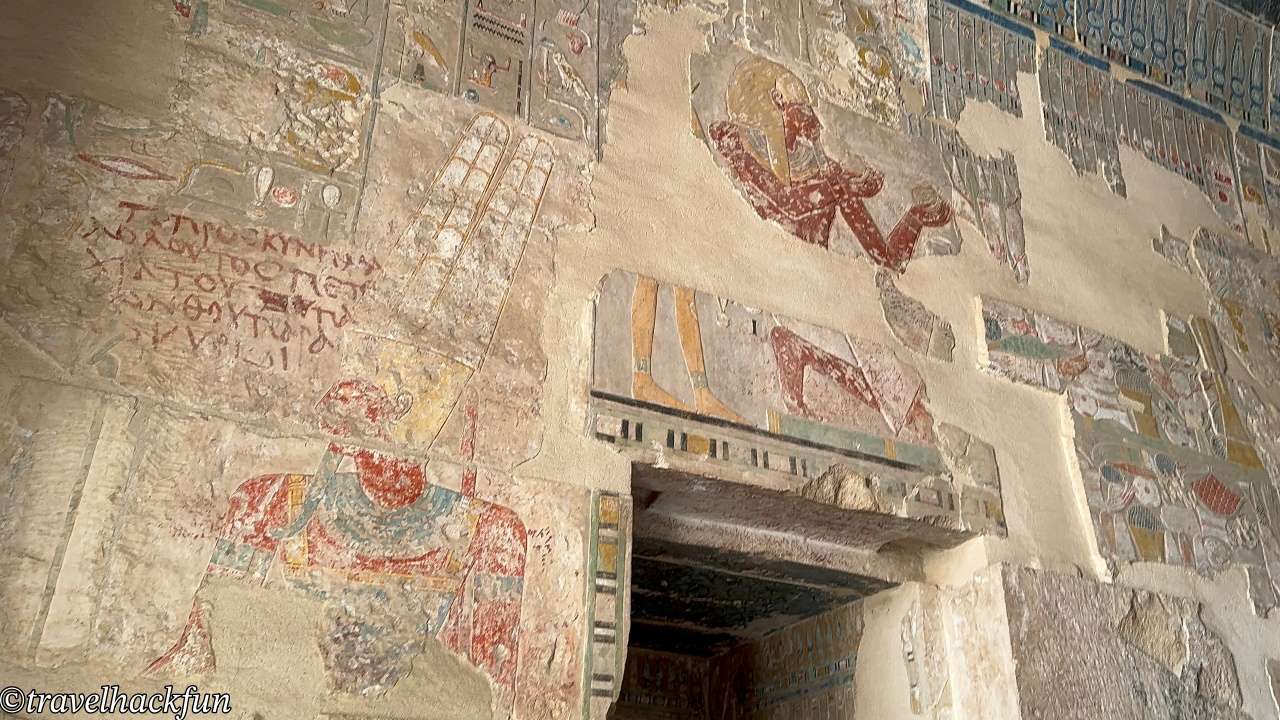
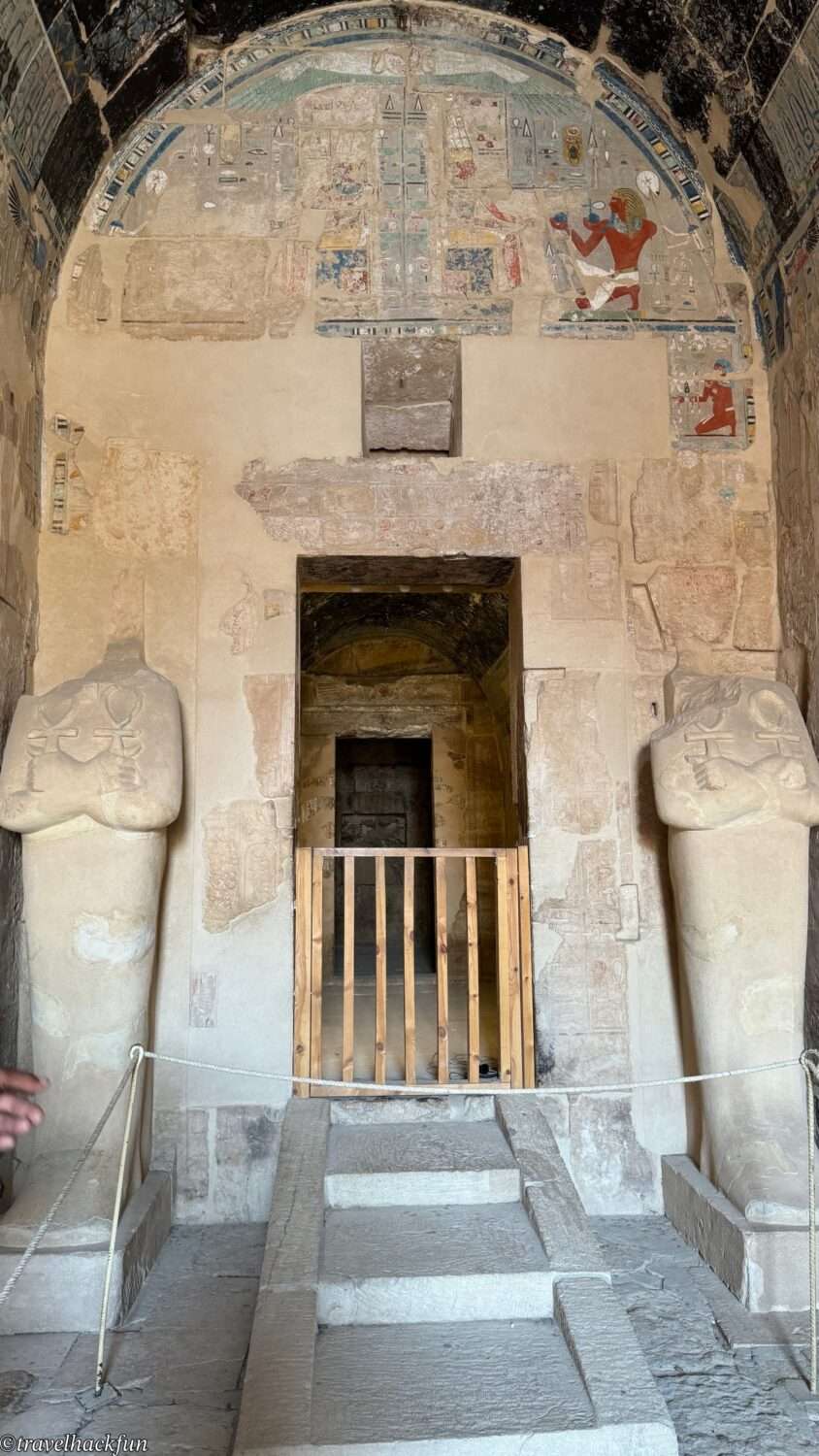
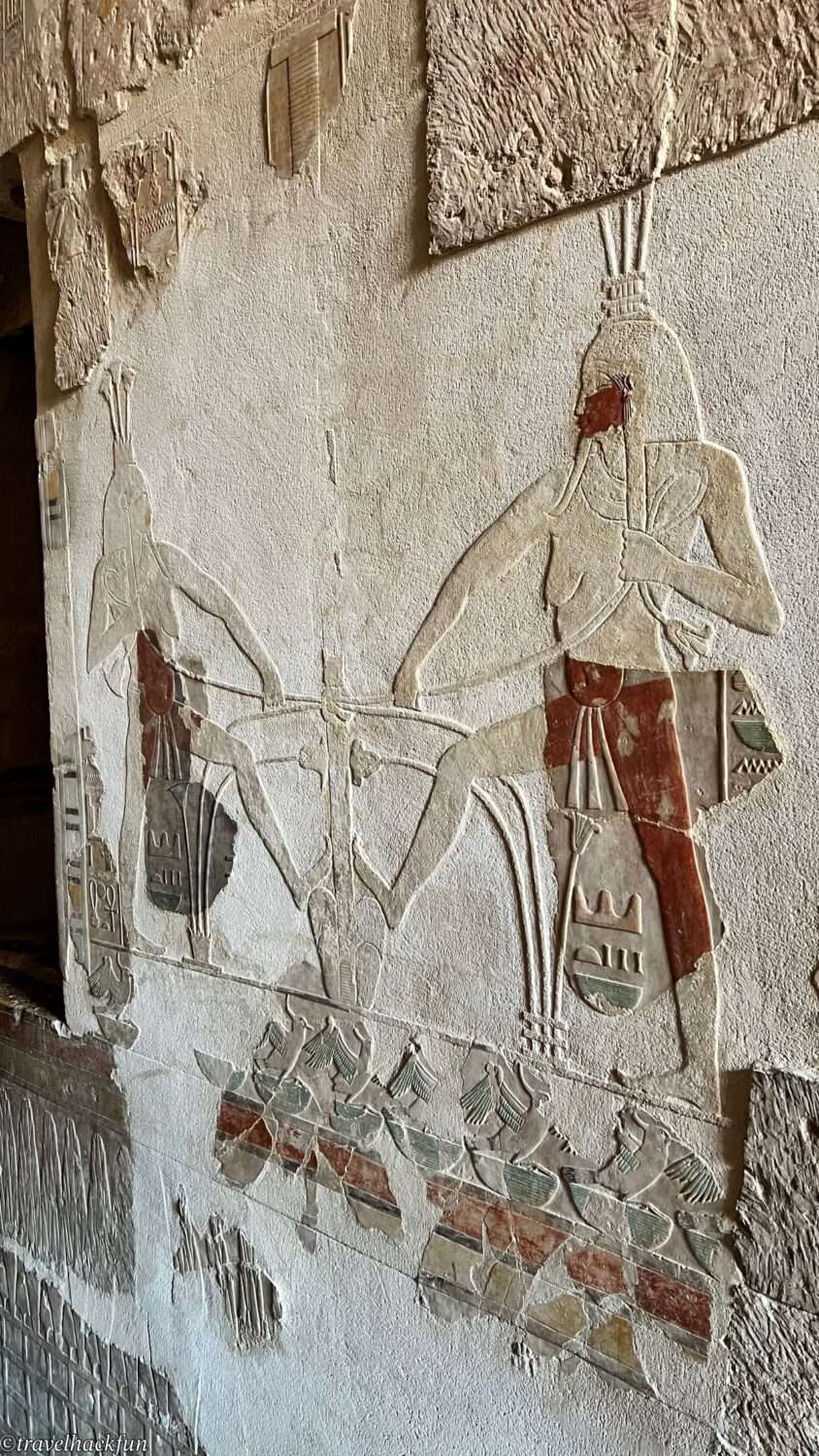
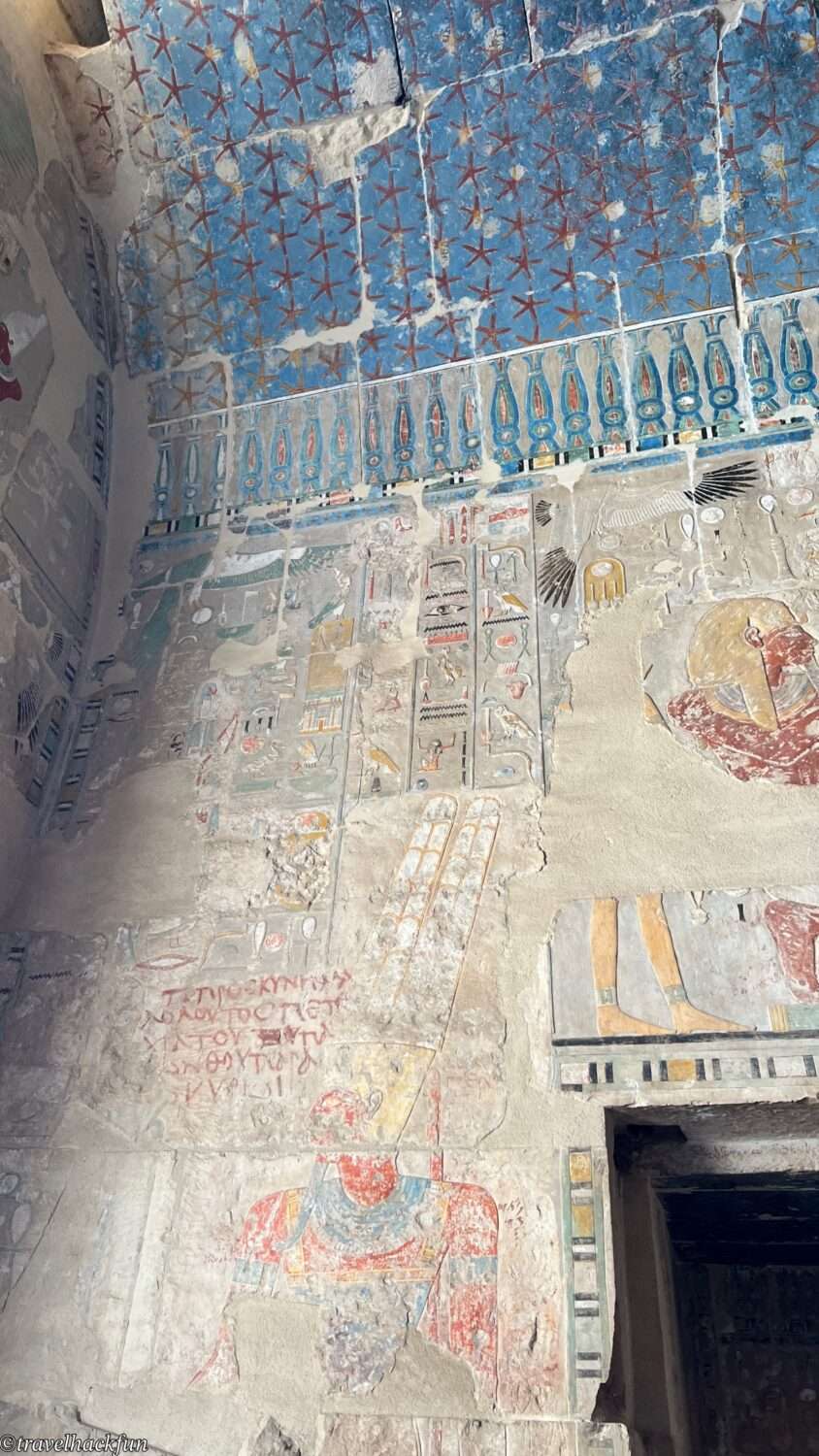
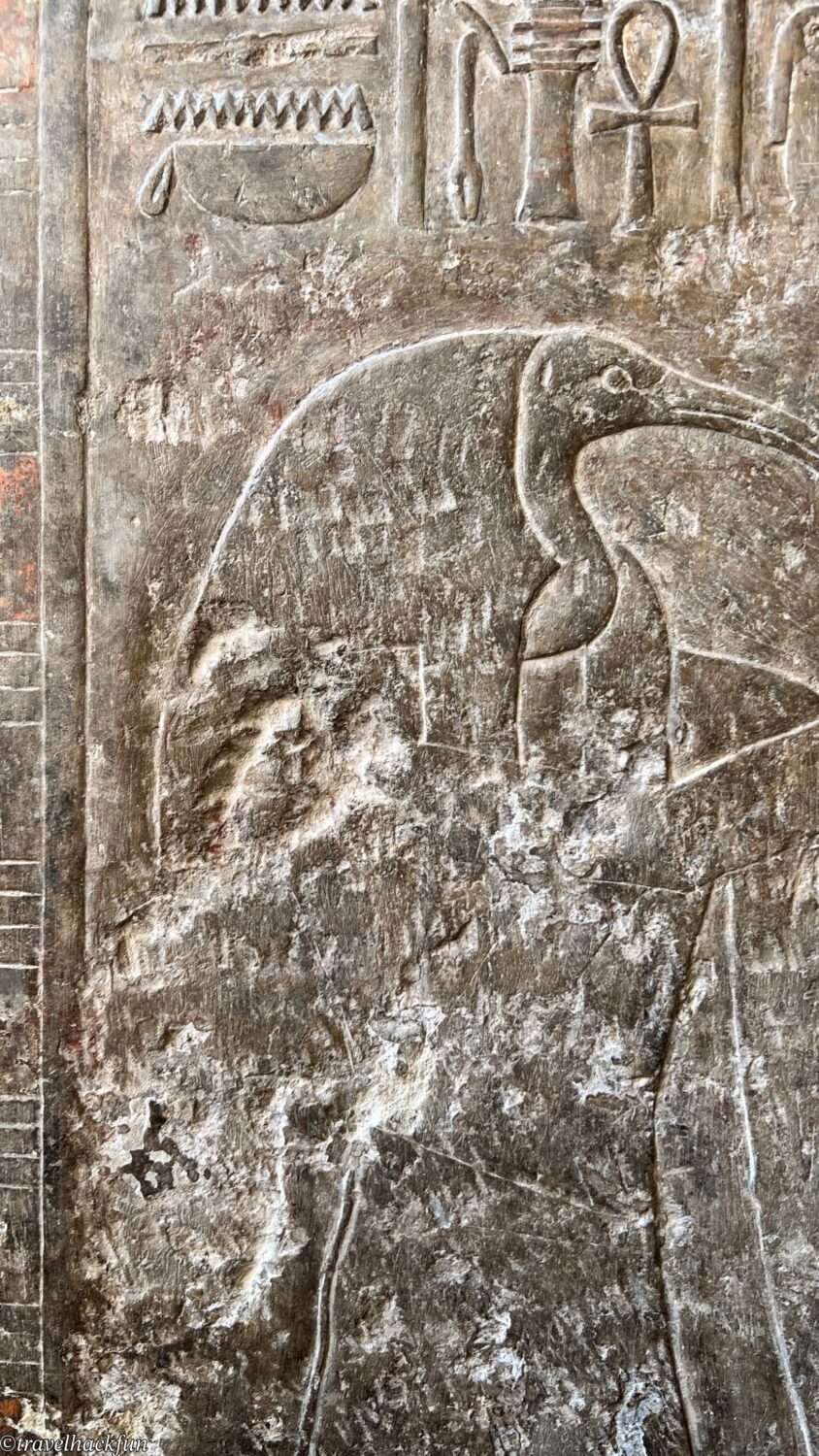
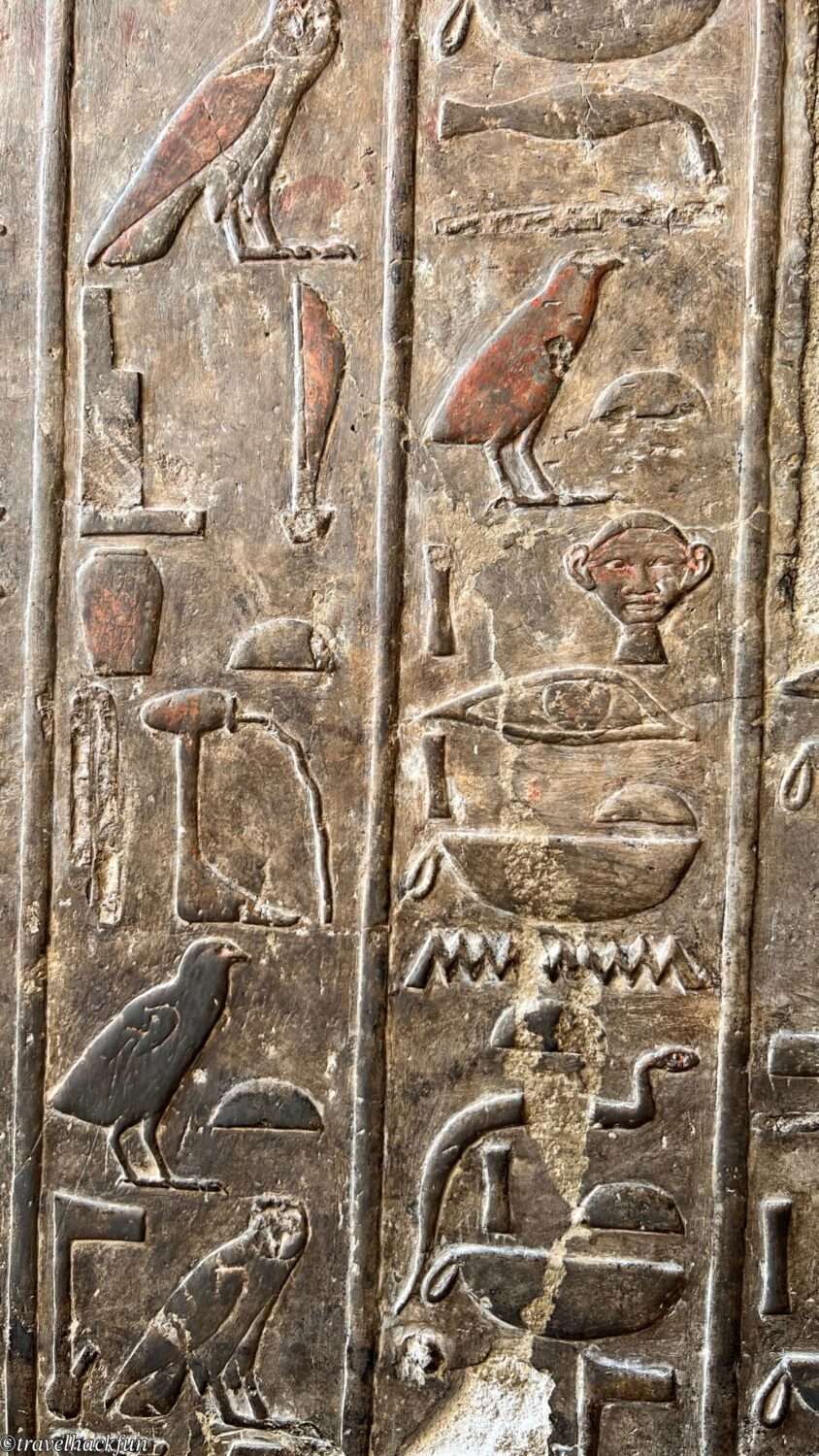
Adjacent to the main sanctuary is the Solar Altar, another significant religious site. This open-air altar was likely used for offerings to the sun god. While much of it is now in ruins, the central stone altar base remains.
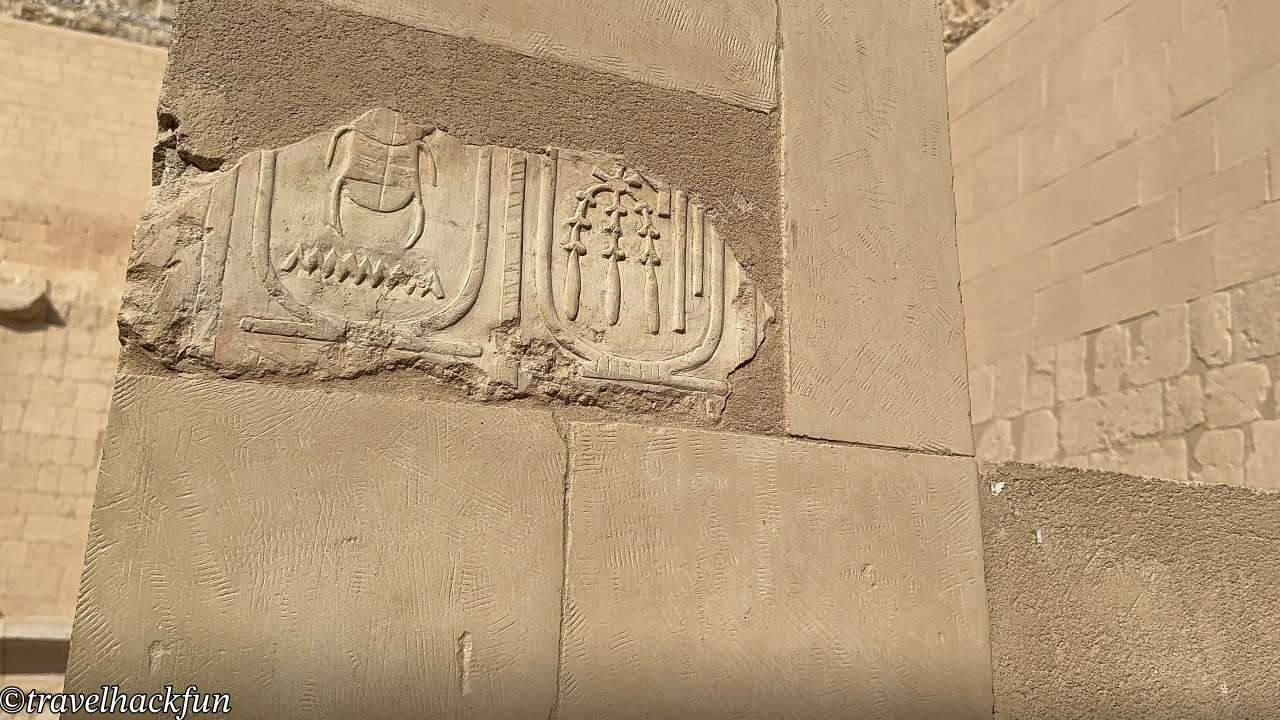
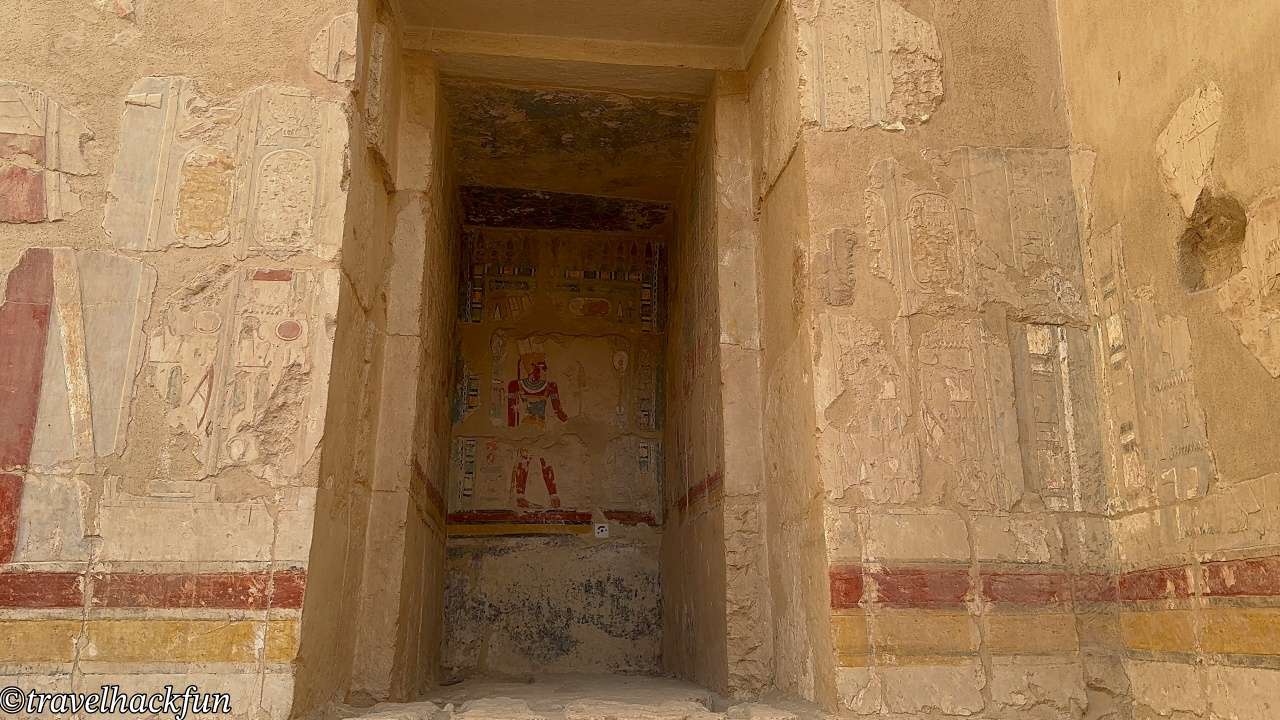
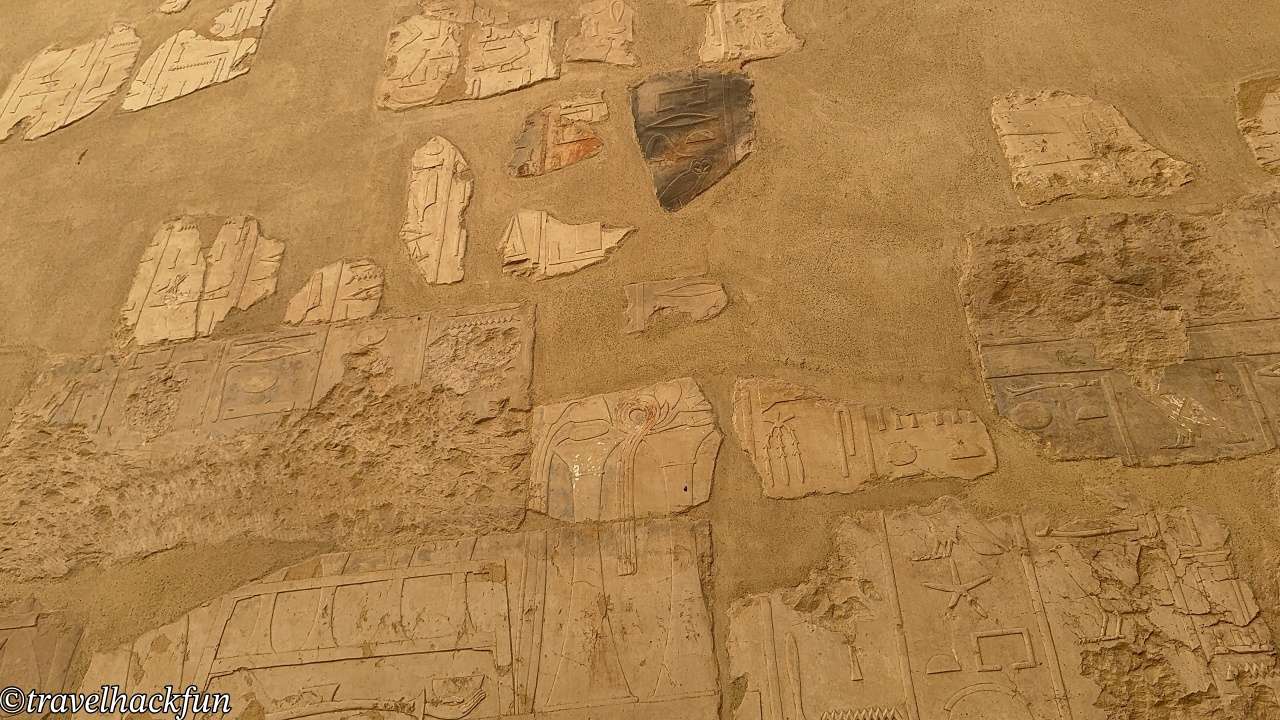
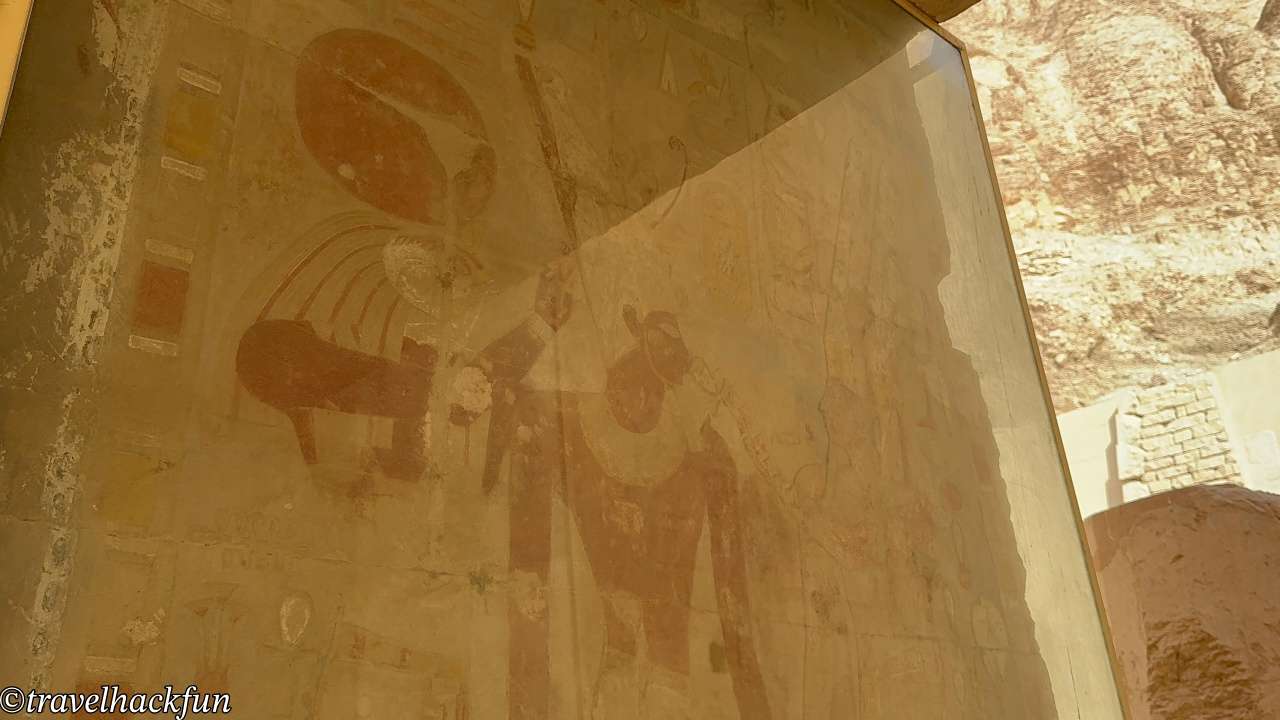
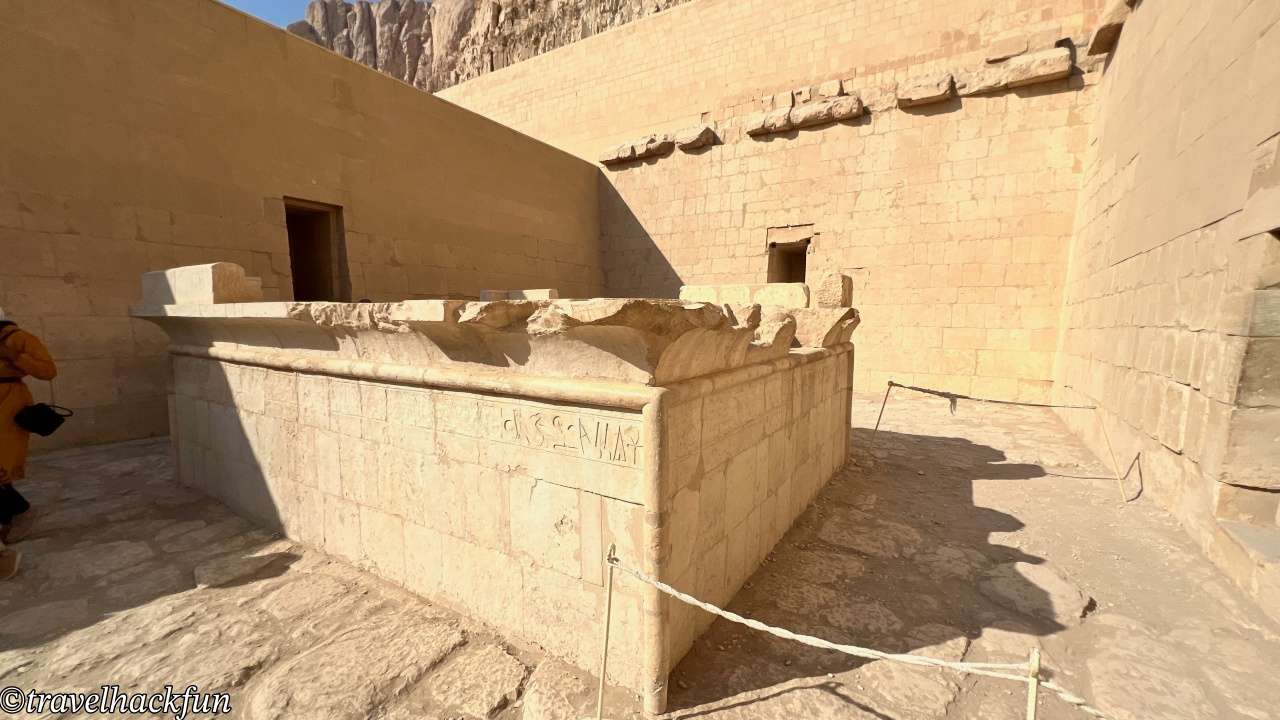
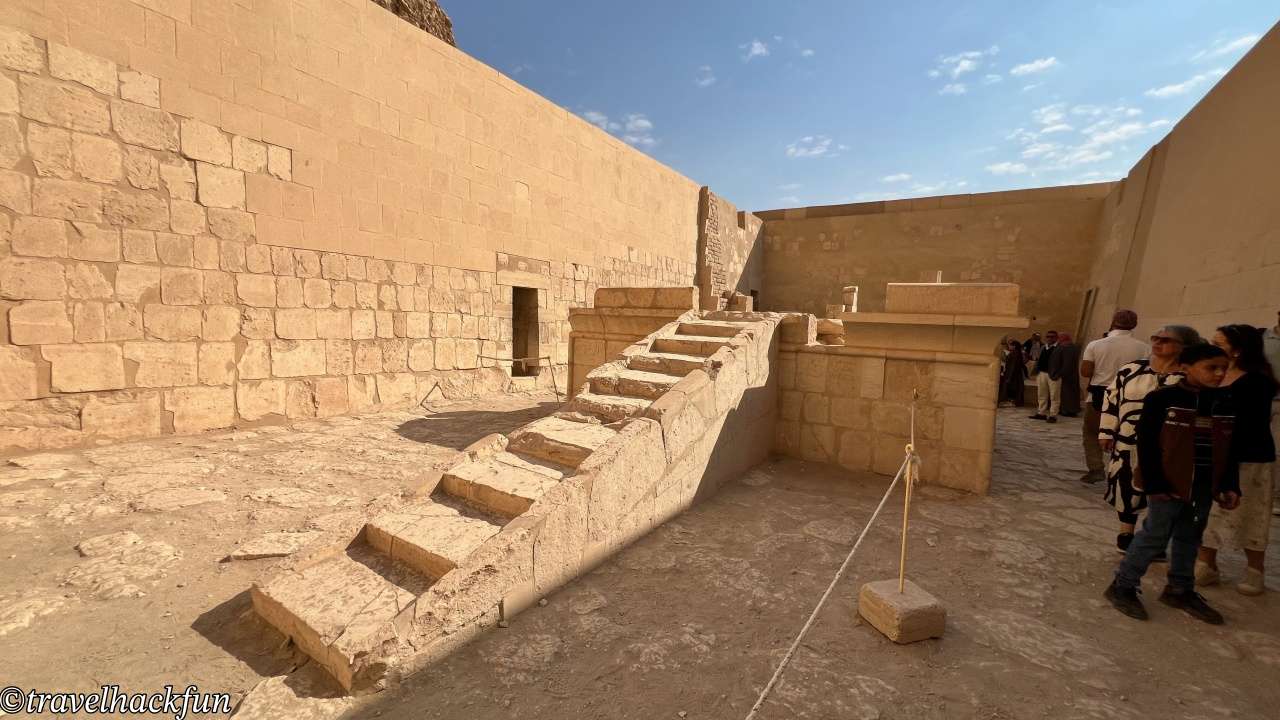
☕ Enjoying my travel notes?
You can Buy me a coffee to support what I do 🙌